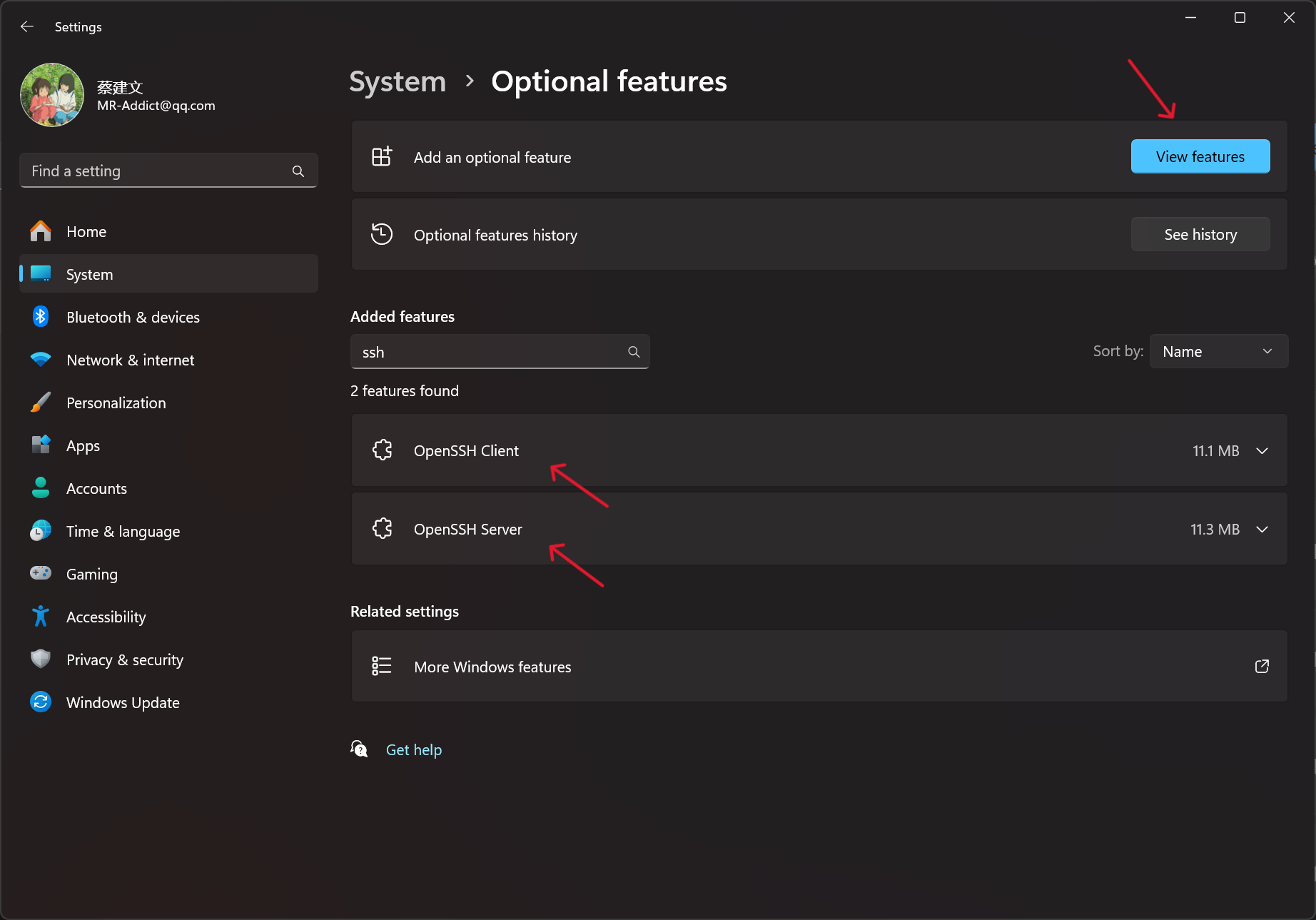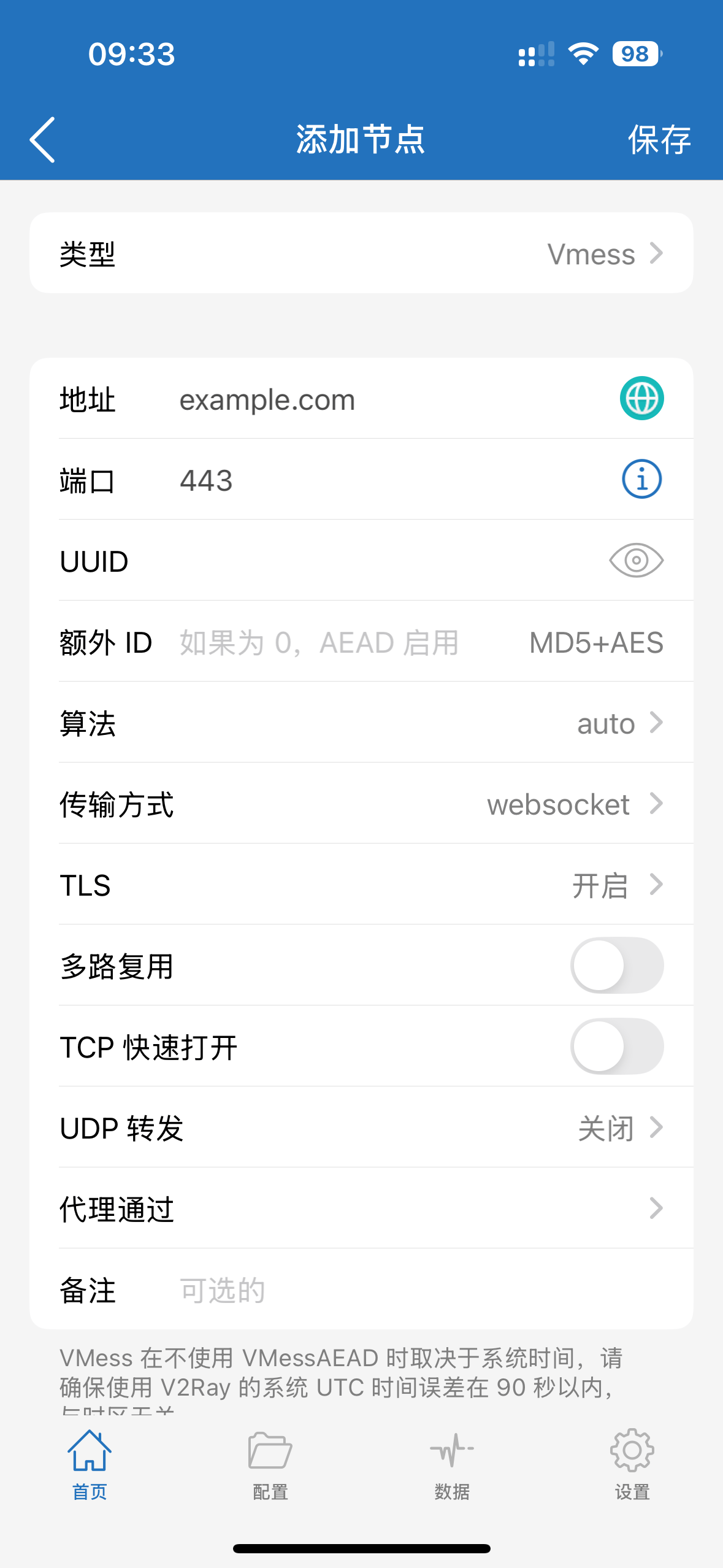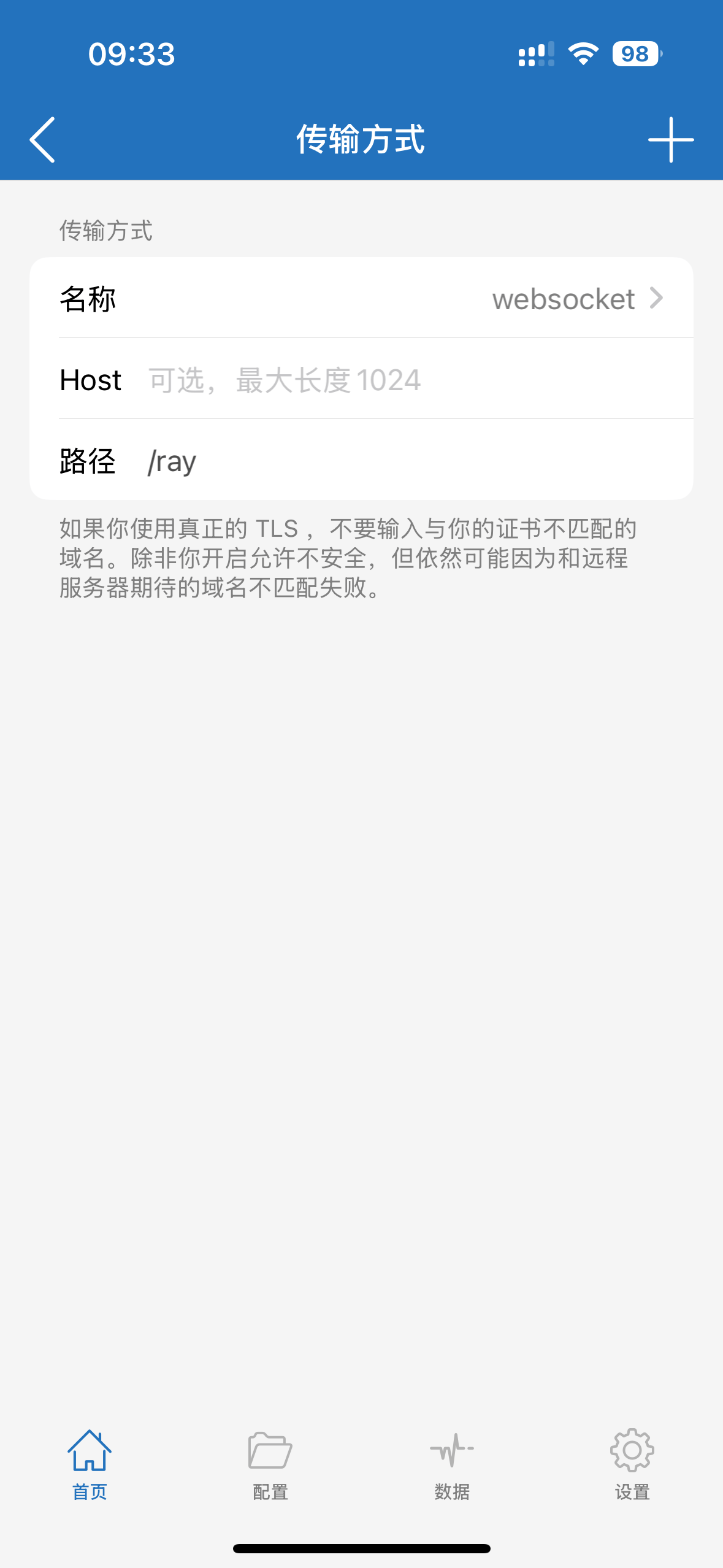我的笔记
非常荣幸你能看到我的笔记!
本项目基于 mdbook 框架,主要是用作笔记的功能,记录一些重要的内容,以方便我在不同的机器上使用 Copy+Paste 魔法。
因为是笔记的原因,所以我不会写得太详细,目的是达到我自己能看懂,并且里面很多的配置都是直接复制我的生产环境配置。
本项目使用了本人开发的 mdbook-embedify 插件,来扩展实现 mdbook 不能实现的一些功能,还是比较实用的,如果你也想使用 mdbook 作为你的下个项目文档工具,可以试试这个插件。
Sanrio(三丽鸥)
一、简介
Sanrio(三丽鸥)是一个日本的公司,成立于 1960 年,以设计、授权和销售可爱的角色商品而闻名。Sanrio 的角色包括 帕恰狗、Hello Kitty和库洛米 等,深受全球消费者的喜爱。
二、角色
三丽鸥旗下有很多可爱的角色,以下是一些比较知名的角色:
帕恰狗
Wikipedia 📝
- 名称:Pochacco、帕恰狗
- 物种:狗
- 性别:男
- 性格:好奇心旺盛、有点漫不经心&一点爱管闲事
帕恰狗(英语:Pochacco),香港叫 PC 狗/PC Dog,是三丽鸥一只白皮肤黑耳朵的狗造型的男性卡通形象。
Hello Kitty
Wikipedia 📝
- 名称:Hello Kitty,凯蒂猫、无口猫
- 物种:猫/人(2015 年,三丽鸥发表新设定,指出:Hello Kitty 并不是猫。她走路是用两只脚,从来没有四只脚走路,并没有猫的行为特性,与过往设定并不相同。)
- 性别:女
- 最喜欢的运动:网球
- 最喜欢食物:妈妈做的苹果派、装饰著饼干颗粒的蜂蜜香草冰淇淋、镇上的面包店叔叔做的法国面包
美乐蒂
Wikipedia 📝
- 名称:Little Red Riding Hood、My Melody、美乐蒂
- 物种:兔子
- 性别:女
- 最喜欢食物:杏仁蛋糕
- 最珍藏的物件:祖母亲手为她缝制的小红帽
美乐蒂(英语:My Melody)是三丽鸥一只戴着粉色头巾(有时美乐蒂的头巾是红色)的兔子造型女性卡通形象也是第一只以兔子为造型的卡通人物,美乐蒂通常有戴蝴蝶结或白花当头饰(有时没戴),在 1975 年 1 月 18 日诞生。
酷洛米
Wikipedia 📝
- 名称:Kuromi、酷洛米
- 物种:兔子
- 性别:女
- 最喜欢的颜色:黑色
- 最喜欢食物:腌蕗荞(小蒜!)
酷洛米(英语:Kuromi),港译可罗米,是三丽鸥一只戴着黑色恶魔头巾(酷洛米的头巾有时是紫色)兔子造型的女性卡通形象,酷洛米的头巾有个粉色骷髅,头巾上的骷髅会随酷洛米的心情变换表情,酷洛米的尾巴亦是恶魔形状。
玉桂狗
Wikipedia 📝
- 名称:Cinnamoroll、玉桂狗、肉桂狗
- 物种:狗
- 性别:男
- 专长:用大耳朵飞翔
- 最喜欢食物:Café Cinnamon 的肉桂卷
大耳狗(英语:Cinnamoroll),又名玉桂狗、喜拿、肉桂狗,是三丽鸥一只蓝眼白肤色的狗造型男性卡通形象。 从遥远天空的白云上出生的男性白色小狗。因为有着像肉桂卷一般卷卷的尾巴,所以被取名为“大耳狗喜拿”。
有一天,大耳狗喜拿碰巧在 Café Cinnamon 咖啡厅被工作的大姐姐发现,从此开始住在一起生活。现在是店里的狗。特技是用大大的耳朵在空中飞翔。他的个性很乖巧,非常喜欢与人相处,有时甚至会趴在客人的膝盖上睡觉。
布丁狗
Wikipedia 📝
- 名称:Pom Pom Purin、布丁狗
- 物种:黄金猎犬(黄金寻回犬,Golden Retriever)
- 性别:男
- 最爱听的话:出门啰!
- 最喜欢的食物:牛奶、妈妈做的布丁
布丁狗(Pom Pom Purin),又名布甸狗,是三丽鸥一只戴着棕色贝雷帽的黄金猎犬造型男性卡通形象。
关于茶色帽子的故事: 有一天,我的小主人放了一顶小帽帽在我的头上,然后大家都说:“哇!好像好好吃的布丁喔!”,从此以后,大家就叫我“布丁狗”,其实我也很喜欢这顶帽子呢!
吉伊卡哇
Wikipedia 📝
一、简介
《吉伊卡哇》(日语:ちいかわ,英语:Chiikawa)是由日本漫画家长野创作的漫画系列,副标题《这又小又可爱的家伙》。该系列自 2020 年 1 月起透过 Twitter 进行连载,并由讲谈社出版单行本。
本作主要描绘一群画风独特的小动物小可爱的日常的漫画展开,并以简单的多格漫画,呈现不同的故事,世界充满了森林、草原等自然丰富的景色,周围还有巨大的食物、如同植物一样自生。虚构世界住宅和商店林立,存在货币经济和互联网。
作为这个世界的居民,包括小可爱们主要从事像除草和讨伐这样的工作,以此维持生计。这些工作都是由一种叫做盔甲先生的种族提供的,此外,还存在着各种资格和相应的考试,根据资格的不同可以获得更高的报酬,还可以喝酒。
此外,这个世界还有一些奇妙的生物,其中一些个体可能对生物造成危害。还有一些个体能够进行对话。
这个世界的居民主要是小可爱们,以下是一些主要角色。
二、主角
吉伊卡哇 (ちいかわ)
- 别名:吉伊、小可爱
- 物种:仓鼠
本作的主角。
白色仓鼠外型的小可爱,是小八猫和兔兔最好的朋友,大部分时间都会在一起玩。虽然会说话但几乎没有台词,很多时候只会说哇、耶、呼等几句话。性格敏感懦弱、容易因害怕而哭泣。是三小只中的胆小鬼,有社交恐惧症,经常依赖小八猫帮忙传话。但往往都第一个冒着危险保护朋友免受邪恶怪物的攻击,展现出无私奉献的一面。
不喜欢吃花椰菜。拥有很强的抽奖运,目前居住的房子是在超级可口优酪乳送房抽奖活动抽中的,此外也曾在美味布丁的抽奖活动中抽到日式牛肉火锅套餐。目前正在为通过除草检定 5 级考试而奋斗。吉伊卡哇的名字是该系列完整标题なんか小さくてかわいいやつ的缩写,意思是又小又可爱。
小八猫(ハチワレ)
- 别名:小八、八字猫
- 物种:奔驰猫
吉伊卡哇和兔兔的朋友。
有着独特的蓝色尾巴和耳朵的奔驰猫型小可爱。与吉伊卡哇相反,性格开朗健谈,积极向上,擅长社交。在三小只中是最成熟外向的,但偶尔有些天然呆。会对自己造成的错误加以反省并决心更加努力。小八猫对朋友相当忠诚,在有困难的时候会及时伸出援手,当吉伊卡哇感到沮丧时也会尽力安慰他。
对艺术表现出了极高的兴趣。会存钱买了一台相机来追求自己的摄影爱好。一个人住在洞窟里。没有门所以常被怪物频繁入侵攻击。拥有除草检定 5 级证照。
兔兔(うさぎ)
- 别名:乌萨奇、兔子、537
- 物种:兔子
吉伊卡哇和小八猫的朋友。
黄色兔子外型的小可爱,几乎不太说话,平时只会发出乌拉、呀哈、哈等等叫声。性格贪吃,爱好自由,经常情绪高涨,导致有些时候会成为麻烦制造者,是三小只中最果断的。初期喜欢欺负吉伊卡哇,但随着和吉伊卡哇、小八猫的长时间相处开始变得重视朋友,也会小可爱出现危机时给予帮助。
虽然平时疯疯癫癫,能力和警觉性却意外地很强,在营救睡衣党的三名成员时第一个从远处注意到他们遭遇大鸭追杀并前往拯救。当吉伊卡哇被怪物绑架时,被小八唤醒的兔兔立即保持警惕并做好战斗准备。拥有除草检定 3 级证照。即使面对危险,永远都维持着一样的表情。
三、其他角色
小桃鼠(モモンガ)
- 别名:飞鼠、小桃、莫莫咖、毛毛力
- 物种:飞鼠
白色飞鼠外型的小可爱。
个性聪明,非常以自我为中心,经常做出捣蛋、偷吃东西来乞求关注和赞扬的行为给其他角色制造麻烦。虽然没有正式证实,但故事中暗示了他原本是一只名叫大强的怪物,因为不明原因从真正的小桃那里夺得身体主导权。后来得知有游戏中心有一台能够交换灵魂的老虎机,并将它给砸烂以防万一。它的名字来源于日语单词“モモンガ“,意思是飞鼠。
栗子馒头(栗まんじゅう)
- 别名:栗子馒头前辈、布丁狗前辈
- 物种:蜜獾
日本栗子面包和蜜獾外型的小可爱。
经常表现得像一个中年日本男子,拥有饮酒证照。剧情中登场很多时候都是在喝酒或吃下酒零食。有时会因为喝太多宿醉脸色发青。性格豪迈大气,在除草劳动时会请吉伊卡哇喝罐装咖啡。 几乎没有台词,吃饭的时候只会发出哈的声音。
海獭(ラッコ)
- 别名:海獭勇者、海獭师傅、师傅、獭师
- 物种:海獭
海獭外型的小可爱。
右眼上方有一个十字形的疤痕。他在讨伐排名顺位第一。时常执行讨伐和其他高风险任务。外表看似严肃实则很照顾后辈,喜欢甜食,只要吃到甜的东西就会开心的作出托腮动作。拥有一台专属的汽车。时常在甜点特卖会时开车前往卖场。
皮克斯动画工作室
一、简介
皮克斯动画工作室(Pixar Animation Studios),简称皮克斯(英语:Pixar),其总部位于美国加利福尼亚州的埃默里维尔,是一家以计算机动画制作而闻名的动画电影制片公司。
1986 年,乔布斯收购了卢卡斯影业的计算机动画部。2006 年,皮克斯被华特迪士尼公司以 74 亿美元收购,成为迪士尼的一部分,乔布斯亦因此成为迪士尼在 2006 年至 2011 年的最大个人股东,直到 2011 年乔布斯逝世后股权才完全归入迪士尼。
截至 2022 年,皮克斯一共发布了 26 部动画长片,第一部是 1995 年的《玩具总动员》,最近的一部是 2024 年的《头脑特工队 2》。皮克斯的 23 部作品都获得了 CinemaScore 至少“A-”的评价,表示得到了观众的积极接受。截至 2019 年 7 月,该公司的所有作品在全世界累计获得了 140 亿美元的票房,平均每部电影获得 6.8 亿美元。有 15 部皮克斯电影曾进入电影票房收入前五十名,其中《玩具总动员 3》成为了全球首部超过十亿美元票房的动画电影。
二、作品
Wikipedia 📝
| 电影名称 | 上映年份 | 票房收入(亿美元) |
|---|---|---|
| Toy Story 玩具总动员 | 1995 | 3.61 |
| A Bug’s Life 虫虫危机 | 1998 | 3.63 |
| Toy Story 2 玩具总动员 2 | 1999 | 4.97 |
| Monsters, Inc. 怪兽电力公司 | 2001 | 5.25 |
| Finding Nemo 海底总动员 | 2003 | 9.36 |
| The Incredibles 超人总动员 | 2004 | 6.31 |
| Cars 汽车总动员 | 2006 | 4.61 |
| Ratatouille 料理鼠王 | 2007 | 6.23 |
| WALL-E 机器人总动员 | 2008 | 5.21 |
| Up 飞屋环游记 | 2009 | 7.31 |
| Toy Story 3 玩具总动员 3 | 2010 | 10.66 |
| Cars 2 汽车总动员 2 | 2011 | 5.62 |
| Brave 勇敢传说 | 2012 | 5.40 |
| Monsters University 怪兽大学 | 2013 | 7.44 |
| Inside Out 头脑特工队 | 2015 | 8.57 |
| The Good Dinosaur 恐龙当家 | 2015 | 3.32 |
| Finding Dory 海底总动员 2 | 2016 | 10.28 |
| Cars 3 汽车总动员 3 | 2017 | 3.83 |
| Coco 寻梦环游记 | 2017 | 8.07 |
| Incredibles 2 超人总动员 2 | 2018 | 12.42 |
| Toy Story 4 玩具总动员 4 | 2019 | 10.73 |
| Onward 头脑特工队 2 | 2020 | 1.41 |
| Soul 心灵奇旅 | 2020 | 1.13 |
| Luca 夏日友晴天 | 2021 | 2.79 |
| Turning Red 青春变形记 | 2022 | 0.19 |
| Lightyear 光年正传 | 2022 | 2.14 |
| Elemental 疯狂元素城 | 2023 | 4.80 |
| Inside Out 2 头脑特工队 2 | 2024 | 16.98 |
迪士尼
一、简介
华特迪士尼公司(The Walt Disney Company)又称迪士尼公司,简称迪士尼、迪斯尼,是美国一家多元化跨国媒体集团,其总部位于加利福尼亚州伯班克,由华特·迪士尼和洛伊·迪士尼于 1923 年 10 月 16 日建立的迪士尼兄弟卡通制片厂(Disney Brothers Cartoon Studio)为其起始基础。随后迪士尼发展成为全美领先的动画电影制作公司,同时也开始涉足真人影视剧制作及主题公园等行业。
迪士尼经典角色
米老鼠
Wikipedia 📝
米老鼠(Mickey Mouse),是一只拟人化的黑色大耳老鼠,通常穿着红色短裤、黄色大鞋和四根手指的白色手套。作为华特迪士尼公司的官方吉祥物,米奇是世界上最知名的迪士尼角色之一。
米奇有一个最佳搭档,米妮。他俩同时诞生,一直是情侣关系。他还有两个铁哥们,唐纳德和高飞。他们经常一起出现,堪称“铁三角”。尽管共事时失败多于成功,三人之间也小摩擦不断,但丝毫不影响他们的友谊。他还有一只忠心耿耿的名叫布鲁托的大黄狗,他们是最好的朋友。
米奇的经典打扮是全身只着红色短裤,穿黄色的大鞋子,戴白手套。不同情境中也会穿相应的衣服,比如小巫师的长袍,指挥的燕尾服,主持人的西装,工人的工作服,火枪手制服等。这些衣服很好地遮挡了他瘦长的四肢,让他的四肢和本不明显的颈、肩、关节显得更明显。
布鲁托
布鲁托(Pluto)是米奇宠物,米奇最喜欢的狗狗!不过他第一次亮相时却是被警察带着去追捕逃犯米老鼠的猎狗,没有名字。布鲁托是一只纯粹的狗,他只能靠鼻音来表达自己的爱憎。虽然他从来不说话,但是他和米奇的沟通却没有丝毫问题。 他对米奇绝对忠诚,友好,并且当米奇有危险的时候他绝对会奋不顾身。布鲁托还有些淘气,有时候还会惹些小麻烦。
布鲁托渴望满足、注意力不集中、喜欢乱蹦乱跳、容易受到惊吓,但是遇到问题的时候,他总是能冷静的推断是非、以令人惊讶的方式解决,而不是武断行事。
三、迪士尼公主
Wikipedia 📝
迪士尼公主(Disney Princess)是迪士尼公司旗下的一个品牌,包含了多位迪士尼动画电影中的女性角色。这个品牌的角色通常被描绘为美丽、善良、勇敢和富有同情心的女性形象。以下是 13 位官方迪士尼公主:
| 角色名称 | 出现电影 | 首次亮相年份 |
|---|---|---|
| Snow White 白雪公主 | 白雪公主 | 1937 |
| Cinderella 灰姑娘 | 灰姑娘 | 1950 |
| Aurora 睡美人 | 睡美人 | 1959 |
| Ariel 爱丽儿 | 小美人鱼 | 1989 |
| Belle 贝儿 | 美女与野兽 | 1991 |
| Jasmine 茉莉公主 | 阿拉丁 | 1992 |
| Pocahontas 宝嘉康蒂 | 风中奇缘 | 1995 |
| Mulan 花木兰 | 花木兰 | 1998 |
| Tiana 蒂安娜 | 公主与青蛙 | 2009 |
| Rapunzel 长发公主 | 魔发奇缘 | 2010 |
| Merida 梅莉达 | 勇敢传说 | 2012 |
| Moana 莫阿娜 | 海洋奇缘 | 2016 |
| Raya 拉雅 | 寻龙传说 | 2021 |
13 位迪士尼官方公主有 12 位在其虚构世界里是公主或文化上同等地位的人物。白雪、奥劳拉、爱丽儿、茉莉、乐佩和梅莉达是国王或女王的女儿;仙度瑞拉、贝儿和蒂安娜因为嫁给王子而成为公主;宝嘉康蒂、莫阿娜和拉雅则是部落酋长的女儿。
唯一的例外是木兰,她在媒体作品中被设定成一对普通夫妇的女儿,而且她在最后嫁给了将军而不是王子。
使用 Wiringpi
官方文档 📝
一、安装 wiringpi
安装 wiringpi:
cd /tmp
wget https://project-downloads.drogon.net/wiringpi-latest.deb
sudo dpkg -i wiringpi-latest.deb
测试是否安成功:
gpio -v
二、基础命令
查看 GPIO 状态:
gpio readall
设置 GPIO 14 号引脚为输出,并且输出高电平:
gpio mode 15 out
gpio write 15 1
还原 GPIO 14 状态:
gpio write 15 0
gpio mode 15 in
三、调用<wiringpi.h>
我们写一个 fan.c 的程序,该程序用于控制树莓派的 GPIO 14。
#include <signal.h>
#include <wiringPi.h>
#define Fan 14
int isLoop = 1;
void breakLoop(int signal) {
isLoop = 0;
}
int main(void) {
signal(SIGINT, breakLoop);
signal(SIGTERM, breakLoop);
signal(SIGHUP, breakLoop);
wiringPiSetupGpio();
pinMode(Fan, OUTPUT);
digitalWrite(Fan, HIGH);
while (isLoop);
digitalWrite(Fan, LOW);
pinMode(Fan, INPUT);
return 0;
}
编译代码:
gcc -Wall -o fan fan.c -lwiringPi
执行代码:
./fan
使用 Init
官方文档 📝
一、配置 init 服务
进入配置文件:
vim /etc/init.d/your_service
添加服务内容:
#!/bin/sh /etc/rc.common
START=99
STOP=10
# commands to launch application
start() {
echo start
}
# commands to kill application
stop() {
ps | awk '/[y]our_service/{print $1}'
}
# start application after boot
boot() {
start
}
给予执行权限:
chmod u+x /etc/init.d/your_service
二、使用 init 服务
运行脚本:
/etc/init.d/your_service start
开机自启任务:
/etc/init.d/your_service enable
关闭开机自启:
/etc/init.d/your_service disable
使用 Vim
一、安装 Vim
opkg update
opkg install vim-full vim-runtime
二、配置 Vim
进入配置文件
vim /usr/share/vim/vimrc
配置内容可参考 Linux-Vim
使用 Uhttp
官方文档 📝
一、安装 uhttpd
opkg update
opkg install uhttpd
二、基本配置模板
进入配置文件:
vim /etc/config/uhttpd
在已有模板后添加以下内容:
config uhttpd 'profile'
option listen_http '8080'
option home '/root/profile'
三、重启 uhttpd
/etc/init.d/uhttpd restart
使用 Mosquitto
一、安装 Mosquitto
进入 OpenWrt 控制台,执行以下命令:
opkg install mosquitto-ssl
安装完成后我们先关闭 Mosquitto 服务,因为我们需要修改配置文件:
/etc/init.d/mosquitto stop
二、配置 Mosquitto
修改配置文件:
vim /etc/mosquitto/mosquitto.conf
配置文件的位置可能有所不同,你可以打开 /etc/init.d/mosquitto 查看配置文件的位置,如:
#!/bin/sh /etc/rc.common
# Basic init script for mosquitto
# April 2012, OpenWrt.org
# Provides support for the luci-app-mosquitto package, if installed
START=80
USE_PROCD=1
TCONF=/tmp/mosquitto.generated.conf
CONF_WATCH=/etc/mosquitto/mosquitto.conf
然后清空配置文件,添加以下内容:
listener 1883 0.0.0.0
persistence true
log_type debug
log_dest file /etc/mosquitto/data/mosquitto.log
allow_anonymous false
password_file /etc/mosquitto/data/passwords.txt
可以发现,我们在配置文件中指定了密码文件和日志的位置。
我们先创建一个 data 目录:
mkdir -p /etc/mosquitto/data
使用以下命令创建密码文件,根据提示输入密码即可:
mosquitto_passwd -c /etc/mosquitto/data/passwords.txt username
然后再使用以下命令创建一个空的日志文件:
touch /etc/mosquitto/data/mosquitto.log
最后给予密码文件和日志文件写入权限:
chmod 777 /etc/mosquitto/data/passwords.txt
chmod 777 /etc/mosquitto/data/mosquitto.log
三、启动 Mosquitto
启动 Mosquitto 服务:
/etc/init.d/mosquitto start
四、测试 Mosquitto
我们可以使用 MQTT 客户端测试 Mosquitto 服务是否正常运行,这里我已 ubuntu 为例。
安装 MQTT 客户端:
sudo apt install mosquitto-clients
订阅主题:
mosquitto_sub -h 192.168.10.1 -t test -u username -P password
发布消息:
mosquitto_pub -h 192.168.10.1 -t test -u username -P password -m "Hello, World!"
其他配置及常用命令
更新包:
opkg update
查看系统信息:
cat /proc/cpuinfo
查看已连接的 WiFi 设备:
cat /tmp/dhcp.leases
查看主机 ip 地址:
ip r|grep 'default' | awk '{print $7}'
查看主机网关地址:
ip r|grep 'default' | awk '{print $3}'
删除某个进程:
kill $(ps|awk '/[m]qtt/{print $1}')
快捷键
一、系统快捷键
1.1 编辑类
| 快捷键 | 作用 |
|---|---|
Cmd + C | 复制 |
Cmd + V | 粘贴 |
Cmd + X | 剪切 |
Cmd + Z | 撤销 |
Cmd + S | 保存 |
Cmd + A | 全选 |
Cmd + F | 查找 |
1.2 窗口类
| 快捷键 | 作用 |
|---|---|
Cmd + H | 隐藏当前窗口 |
Cmd + Q | 退出应用 |
Cmd + W | 关闭当前窗口 |
Cmd + Ctrl + F 或 Fn + F | 切换全屏 |
Cmd + M | 最小化窗口 |
Cmd + N | 新建窗口 |
Cmd + Tab | 切换窗口 |
1.3 截图类
| 快捷键 | 作用 |
|---|---|
Cmd + Shift + 3 | 截取全屏 |
Cmd + Shift + 4 | 截取指定区域 |
Cmd + Shift + 4 + 空格 | 截取窗口 |
Cmd + Shift + 5 | 截取屏幕录像 |
1.4 光标移动
| 快捷键 | 作用 |
|---|---|
Cmd + ← | 行首 |
Cmd + → | 行尾 |
Cmd + ↑ | 文件顶部 |
Cmd + ↓ | 文件底部 |
Cmd + Delete | 删除光标前字符 |
Option + ← | 移动光标到单词左边 |
Option + → | 移动光标到单词右边 |
1.4 其他
| 快捷键 | 作用 |
|---|---|
Cmd + Space | 打开 Spotlight |
Cmd + Option + Esc | 强制退出应用 |
二、应用快捷键
2.1 Finder
| 快捷键 | 作用 |
|---|---|
Cmd + N | 新建窗口 |
Cmd + Shift + N | 新建文件夹 |
Cmd + Delete | 移动到废纸篓 |
Cmd + Shift + Delete | 清空废纸篓 |
Cmd + Option + L | 打开下载文件夹 |
Cmd + Option + P | 显示/隐藏路径栏 |
2.2 Safari
| 快捷键 | 作用 |
|---|---|
Cmd + T | 新建标签 |
Cmd + W | 关闭标签 |
Cmd + R | 刷新页面 |
Cmd + L | 定位地址栏 |
使用 NVM
一、安装 NVM
使用 homebrew 安装 nvm:
brew install nvm
二、配置 NVM
在 ~/.zshrc 或 ~/.bashrc 中添加以下内容:
export NVM_DIR="$HOME/.nvm"
[ -s "/opt/homebrew/opt/nvm/nvm.sh" ] && \. "/opt/homebrew/opt/nvm/nvm.sh" # This loads nvm
[ -s "/opt/homebrew/opt/nvm/etc/bash_completion.d/nvm" ] && \. "/opt/homebrew/opt/nvm/etc/bash_completion.d/nvm" # This loads nvm bash_completion
三、使用 NVM
关于如何使用 nvm,请参考 Windows/使用 NVM。
Pyenv
一、安装 pyenv
首先你需要安装 brew,然后执行以下命令安装 pyenv:
brew install pyenv
二、配置环境变量
在~/.zprofile或~/.zshrc中添加以下内容:
# Pyenv
export PYENV_ROOT="$HOME/.pyenv"
[[ -d $PYENV_ROOT/bin ]] && export PATH="$PYENV_ROOT/bin:$PATH"
eval "$(pyenv init - zsh)"
三、使用 pyenv
关于如何使用 pyenv,请参考Windows/使用 Pyenv 。
Terminal
一、Oh My Posh
官方文档 📝
在 .zprofile 中添加以下内容:
# Oh-my-posh
eval "$(oh-my-posh init zsh --config $(brew --prefix oh-my-posh)/themes/amro.omp.json)"
更改 cache 位置,新建一个 ~/.cache 目录,oh-my-ppsh 会在这个目录下缓存一些文件:
mkdir ~/.cache
二、ZSH 自动补全
官方文档 📝
安装 zsh-autosuggestions:
brew install zsh-autosuggestions
然后在~/.zprofile或~/.zshrc中添加以下内容:
source $(brew --prefix)/share/zsh-autosuggestions/zsh-autosuggestions.zsh
三、ZSH 高亮
官方文档 📝
安装 zsh-syntax-highlighting:
brew install zsh-syntax-highlighting
然后在~/.zprofile或~/.zshrc中添加以下内容:
source $(brew --prefix)/share/zsh-syntax-highlighting/zsh-syntax-highlighting.zsh
使用 Homebrew
Homebrew 是 macOS 上的软件包管理器,可以帮助你安装和管理软件包。它是一个非常强大的工具,可以帮助你快速安装软件包,而不需要手动下载和安装。
一、安装 xcode-select
在安装 Homebrew 之前,你需要安装 xcode-select,它是 macOS 上的一个命令行工具,可以帮助你安装开发工具,如 git、make、gcc 等。
xcode-select --install
二、安装 Homebrew
安装 Homebrew 非常简单,只需要在终端中运行以下命令即可:
/bin/bash -c "$(curl -fsSL https://raw.githubusercontent.com/Homebrew/install/HEAD/install.sh)"
三、配置 Homebrew
安装完成后,你需要配置 Homebrew,以便它可以正常工作。首先,你需要将 Homebrew 的路径添加到你的 PATH 环境变量中,正常情况下,如果你是使用 zsh,那么你可以将以下命令添加到你的 ~/.zshrc 文件中:
eval "$(/opt/homebrew/bin/brew shellenv)"
四、使用 Homebrew
检查 Homebrew 是否安装成功:
brew --version
检查系统是否正常:
brew doctor
更新 Homebrew:
brew update
升级 Homebrew:
brew upgrade
五、常用命令
nvm:
brew install nvm
htop:
brew install htop
wget:
brew install wget
其他配置及常用命令
一、Git 无法提交
问题描述:在提交代码时,出现如下错误:
warning: unable to access '/Users/cael/.config/git/ignore': Permission denied
warning: unable to access '/Users/cael/.config/git/attributes': Permission denied
这主要是由于权限问题导致的,可以通过以下命令解决:
sudo chown -R cael:(id -gn $USER) /Users/cael/.config
修改 HOST
Windows 上的 HOST 文件位于:
C:\Windows\System32\drivers\etc\hosts
使用 GO
一、安装 GO
前往 Golang 官网 下载最新版本的 Golang 安装包。
二、设置代理
使用 go env 命令设置代理:
go env -w GO111MODULE=on
go env -w GOPROXY=https://goproxy.io,direct
使用管理员打开设置全局的环境变量:
setx /M HTTP_PROXY "http://127.0.0.1:7890"
setx /M HTTPS_PROXY "http://127.0.0.1:7890"
使用 WSL
一、卸载和安装
查看 WSL 信息:
wsl --status
查看已安装的 WSL 发行版:
wsl --list --verbose
查看可使用的 WSL 发行版:
wsl --list --online
安装某个 WSL 发行版:
wsl --install Ubuntu
卸载某个 WSL 发行版:
wsl --unregister Ubuntu
启动某个 WSL 发行版:
wsl -d Ubuntu
停止某个 WSL 发行版:
wsl --terminate Ubuntu
重启某个 WSL 发行版:
wsl --shutdown Ubuntu
停止所有 WSL 发行版:
wsl --shutdown
设置默认的 WSL 发行版:
wsl --set-default Ubuntu
二、文件系统
WSL 与 Windows 共享文件系统,可以通过 \\wsl$ 访问 WSL 文件系统。
查看 WSL 文件系统:
explorer.exe \\wsl$
在 WSL 中访问 Windows 文件系统:
cd /mnt/c
在 Windows 中访问 WSL 文件系统:
cd \\wsl$\Ubuntu
三、WSL 与 Windows 交互
在 WSL 中执行 Windows 命令:
cmd.exe /c echo hello
在 WSL 中启动 Windows 程序:
explorer.exe .
在 Windows 中执行 WSL 命令:
ls | wsl grep .md
四、WSL 配置文件
官方文档 📝
某个 WSL 发行版的配置文件:
vim /etc/wsl.conf
参考配置:
[boot]
systemd=true
command = service nginx start
[automount]
enabled = true
[interop]
enabled = false
appendWindowsPath = false
全局 WSL 配置文件:
notepad ~/.wslconfig
参考配置:
[wsl2]
memory=4GB
firewall=true
autoProxy=true
dnsTunneling=true
networkingMode=mirrored
五、备份和恢复
备份 WSL 发行版:
wsl --export Ubuntu ubuntu.tar
恢复 WSL 发行版:
wsl --import Ubuntu ubuntu.tar
使用 SSH
一、安装 OpenSSH
如果你是 Windows 10,那么可以在 设置 -> 应用 -> 可选功能 中安装 OpenSSH 客户端和服务器。
如果你是 Windows 11,那么可以在 设置 -> 系统 -> 可选功能 中安装 OpenSSH 客户端和服务器。
请按照下图所示安装 OpenSSH Server,OpenSSH Client 可选安装,一般系统默认已经安装:
然后用管理员权限打开 PowerShell,运行以下命令查看 OpenSSH 服务状态:
Get-WindowsCapability -Online | Where-Object Name -like 'OpenSSH*'
输出内容类似如下:
Name : OpenSSH.Client~~~~0.0.1.0
State : Installed
Name : OpenSSH.Server~~~~0.0.1.0
State : Installed
如果 State 为 Installed,则表示 OpenSSH 服务已经安装。
二、配置 OpenSSH
用管理员权限打开 PowerShell。
然后设置 OpenSSH 服务自动启动:
Set-Service -Name sshd -StartupType 'Automatic'
接着启动 OpenSSH 服务:
Start-Service sshd
最后查看 OpenSSH 服务状态:
Get-Service -Name sshd
另外也可以查看 22 端口是否已经监听:
netstat -an | findstr /i ":22"
三、配置防火墙
如果你的 Windows 系统开启了防火墙,那么需要配置防火墙允许 OpenSSH 服务通过。
用管理员权限打开 PowerShell,查看防火墙规则:
Get-NetFirewallRule -Name *OpenSSH-Server* | select Name, Enabled
输出内容类似如下:
Name Enabled
---- -------
OpenSSH-Server-In-TCP True
如果 Enabled 为 False,则表示防火墙规则未启用,需要启用防火墙规则:
New-NetFirewallRule -Name sshd -DisplayName 'OpenSSH Server (sshd)' -Enabled True -Direction Inbound -Protocol TCP -Action Allow -LocalPort 22
四、配置文件
官方文档 📝
如果你有其他的 SSH 配置需求,可以修改 SSH 的配置文件:
C:\Programdata\ssh\sshd_config
例如,你可以修改 SSH 的端口号:
Port 2222
还例如,我们想使用 Powershell 作为默认的 Shell,可以修改如下配置:
ForceCommand pwsh.exe
修改配置文件后,需要重启 OpenSSH 服务:
Restart-Service sshd
五、使用 SSH
在 Winddows 上使用 SSH 类似于在 Linux 或 macOS 上使用 SSH,可以参考后面 在 Linux 中使用 SSH 的文档。
在 Windows 系统中,可以使用 ssh 命令连接远程服务器,例如:
ssh username@hostname
其中 username 是远程服务器的用户名,hostname 是远程服务器的 IP 地址或域名。
如果你的远程服务器使用非默认的 SSH 端口,可以使用 -p 参数指定端口:
ssh -p port username@hostname
其中 port 是远程服务器的 SSH 端口。
如果你的远程服务器使用密钥登录,可以使用 -i 参数指定密钥文件:
ssh -i keyfile username@hostname
其中 keyfile 是密钥文件的路径。
使用 NVM
一、安装 NVM
前往 Github 下载最新的NVM
也可以通过 Winget 安装 NVM:
winget install --id CoreyButler.NVMforWindows
二、使用 NVM
查看可用的 Node
# 查看已安装的Node
nvm list installed
# 查看可用的Node
nvm list available
安装 Node
# 安装最新版本的Node
nvm install latest
# 安装指定版本的Node
nvm install 18.20.4
切换 Node 版本
# 切换到最新版本的Node
nvm use latest
# 切换到指定版本的Node
nvm use 18.20.4
卸载 Node
# 卸载指定版本的Node
nvm uninstall 18.20.4
使用 Pyenv
一、安装 Pyenv
使用 Powershell 安装:
Invoke-WebRequest -UseBasicParsing -Uri "https://raw.githubusercontent.com/pyenv-win/pyenv-win/master/pyenv-win/install-pyenv-win.ps1" -OutFile "./install-pyenv-win.ps1"; &"./install-pyenv-win.ps1"
二、使用 Pyenv
查看可用的 Python
# 查看已安装的Python
pyenv global
# 查看可用的Python
pyenv install --list
安装 Python
pyenv install 3.12.0
切换 Python 版本
pyenv global 3.12.0
卸载 Python
pyenv uninstall 3.12.0
使用 Winget
一、软件类
VSCode
winget install --id Microsoft.VisualStudioCode
Chrome
winget install --id Google.Chrome
Github Desktop
winget install --id GitHub.GitHubDesktop
Bandzip
winget install --id Bandisoft.Bandizip
Drawio
winget install --id JGraph.Draw
Wireguard
winget install --id WireGuard.WireGuard
Powertoys
winget install --id Microsoft.PowerToys
Raspberry Pi Imager
winget install --id RaspberryPiFoundation.RaspberryPiImager
Docker Desktop
winget install --id Docker.DockerDesktop
Postman
winget install --id Postman.Postman
Telegram Desktop
winget install --id Telegram.TelegramDesktop
MongoDB Compass
winget install --id MongoDB.Compass.Full
二、终端类
Git
winget install --id Git.Git
Oh-My-Posh
winget install --id JanDeDobbeleer.OhMyPosh
Powershell
winget install --id Microsoft.PowerShell
NVM
winget install --id CoreyButler.NVMforWindows
Rust
winget install --id Rustlang.Rust.MSVC
NTOP
winget install --id Gsass1.NTop
NeoVim
winget install --id Neovim.Neovim
UPX
winget install --id=UPX.UPX
mkcert
winget install --id FiloSottile.Mkcert
使用 Oh My Posh
官方文档 📝
一、安装 Oh My Posh
使用 Winget 安装 Oh My Posh:
winget install --id JanDeDobbeleer.OhMyPosh
也可以使用 PowerShell 脚本安装:
Set-ExecutionPolicy Bypass -Scope Process -Force; Invoke-Expression ((New-Object System.Net.WebClient).DownloadString('https://ohmyposh.dev/install.ps1'))
二、配置 Oh My Posh
在 PowerShell 配置文件中添加以下内容:
# Oh-My-Posh
oh-my-posh init --config "$env:POSH_THEMES_PATH/amro.omp.json" | Invoke-Expression
使用 Powershell
一、安装 Powershell
前往 Github 下载最新版本的Powershell。
也可以通过 Winget 安装 Powershell:
winget install --id Microsoft.PowerShell
二、配置 Powershell
1. 允许运行脚本
使用管理员权限打开 Powershell,输入以下命令:
Set-ExecutionPolicy RemoteSigned
2. 添加 Powershell 配置文件
进入配置文件:
vim $PROFILE
添加以下内容:
# Function
function la_fun { Get-ChildItem -Force }
function git_clean_fun { git restore . ; git clean -f }
function docker_clean_fun { docker system prune -a -f }
# Set Alias
Set-Alias -Name vim -Value nvim
Set-Alias -Name ll -Value Get-ChildItem
Set-Alias -Name la -Value la_fun
Set-Alias -Name htop -Value ntop
Set-Alias -Name ifconfig -Value ipconfig
Set-Alias -Name git-clean -Value git_clean_fun
Set-Alias -Name docker-clean -Value docker_clean_fun
# Oh-My-Posh
oh-my-posh init pwsh --config "$env:POSH_THEMES_PATH/amro.omp.json" | Invoke-Expression
# Enviroments
$env:TF_ENABLE_ONEDNN_OPTS=0
$env:TF_CPP_MIN_LOG_LEVEL=1
三、使用 Powershell:
在终端中输入以下命令启动 powershell:
pwsh
设置环境变量
一、 查看环境变量
set
二、设置临时环境变量
设置临时环境变量只在当前会话中有效,关闭当前会话后失效:
set ENV_NAME "value"
删除临时环境变量:
set ENV_NAME=
三、设置全局环境变量
设置全局环境变量需要管理员权限:
setx /M ENV_NAME "value"
删除全局环境变量:
setx /M ENV_NAME=
使用 git
一、配置 git
进入 git 配置文件:
vim ~/.gitconfig
然后添加以下内容:
[user]
name=Cael
email=MR-Addict@qq.com
[http]
proxy=http://127.0.0.1:7890
[https]
proxy=http://127.0.0.1:7890
二、首次提交模板
添加基本内容:
git init
echo "# Test" > README.md
git add README.md
git commit -m "First commit"
添加远程仓库链接:
git remote add github https://github.com/MR-Addict/Doc-Share.git
更改默认分支名为 main:
git branch -M main
推送提交到远程仓库:
git push -u github main
三、命令合集
删除本地和远程标签:
git tag -d $tag
git push origin :refs/tags/$tag
重命名本地和远程标签:
git tag $tagNew $tagOld
git tag -d $tagOld
git push origin $tagNew :$tagOld
删除本地和远程分支:
git branch -D $branch
git push origin --delete $branch
四、配置命令
查看本地配置:
git config --list
查看全局配置:
git config --global --list
编辑全局配置:
git config --global --edit
设置全局用户名:
git config --global user.name Cael
配置全局用户邮箱:
git config --global user.email MR-Addict@qq.com
设置只拉取不提交:
git config --global pull.ff only
设置默认分支为 main:
git config --global init.defaultBranch main
保存系统登录验证:
git config --system credential.helper store
重置系统登录验证:
git config --system --unset credential.helper
五、其他常用命令
查看提交记录:
git log
查看当前状态:
git status
回退版本:
git reset --hard $hash_value_of_last_commit
重置所有内容,并且删除新文件:
git restore .
git clean -f
使用 Vim
一、安装 Vim
sudo apt-get install vim -y
二、配置 Vim
注意 💥
你可以在打开vim 编辑器之后,输入下面的命令查看支持的配置文件位置:
:version
进入 vim 配置文件:
vim ~/.vimrc
添加以下内容:
syntax on
set number
set relativenumber
set tabstop=2 softtabstop=2
set shiftwidth=2
set expandtab
set smartcase
set incsearch
set nobackup
set undodir=~/.vim/undodir
set undofile
set backspace=indent,eol,start
set smartindent
let &t_SI = "\e[6 q"
let &t_EI = "\e[2 q"
注意 💥
本配置只在当前用户下有效,如果你想在 root 也有效需要重新配置
Windows 下的配置文件为
~/AppData/Local/nvim/init.vim
三、使用 vim
命令类
强制退出:
q!
退出并保存:
qw
执行命令:
!echo hello
编辑类
在前方插入:
i
在最前端插入:
[shift]+i
在后方插入:
a
在最后端插入:
[shift]+a
在下方插入:
o
在上方插入:
[shift]+o
替换:
r+[letter]
快捷键类
删除:
v+d
复制:
v+y
粘贴:
p
搜索:
/[keyword]
# 搜索下一个
n
# 搜索上一个
N
替换:
:%s/name_1/name_2/g
清空整个文件:
:%d
使用 SSH
一、通过 Puttygen 使用 SSH
直接参考以下文章即可,这里不做详细介绍了:
参考文章 📝
二、使用 ssh-keygen 配置 SSH 密钥
生成密钥,一路回车选择默认选项就好了:
ssh-keygen -t rsa -b 2048 -f piserver -C "piserver"
配置服务器,将公钥放到服务器上:
cat piserver.pub >> ~/.ssh/authorized_keys
配置连接端:
vim ~/.ssh/config
添加以下内容:
Host piserver
HostName 192.168.10.30
Port 22
User cael
IdentityFile ~/Documents/cael/ssh/piserver/piserver
三、使用 scp 复制文件
从服务器复制文件,服务器路径为/home/cael/projects/hello.py,客户端路径为当前路径:
scp cael@192.168.10.30:projects/hello.py .
向客户端传输文件,服务器路径为/home/cael/projects,客户端路径为当前路径:
scp hello.py cael@192.168.10.30:projects
复制整个文件夹到服务器,服务器路径为/home/cael/pictures,客户端路径为当前路径:
scp -r Images cael@192.168.10.30:pictures
配置 Alias
进入 sh_aliaes 配置文件
vim ~/.sh_aliases
添加以下内容:
alias la="ls -a"
alias ll="ls -l"
alias reboot="sudo reboot"
alias shutdown="sudo shutdown -h now"
alias git-clean="git restore . && git clean -f"
alias docker-clean="docker system prune -a -f"
alias apt-update="sudo apt-get update && sudo apt-get dist-upgrade -y"
alias apt-clean="sudo apt-get autoremove -y && sudo apt-get clean -y"
注意 💥
本配置只在当前用户下有效,如果你想在 root 也有效需要重新配置
使用 Crontab
一、配置 crontab
进入 corntab 配置文件:
crontab -e
如果你是第一次使用,crontab 可能需要你选择默认的编辑器,这边我一般会选择 vim 作为我的编辑器,因此输入 2:
Select an editor. To change later, run 'select-editor'.
1. /bin/nano <---- easiest
2. /usr/bin/vim.basic
3. /usr/bin/vim.tiny
4. /bin/ed
你也可以在后面更改默认的编辑器:
select-editor
或者使用下面的命令直接更改默认编辑器:
sudo update-alternatives --set editor /usr/bin/vim.basic
查看已有任务:
crontab -l
二、contab 语法
基本格式:
* * * * * [username] command(s)
- - - - -
| | | | |
| | | | ----- Day of week (0 - 7) (Sunday=0 or 7)
| | | ------- Month (1 - 12)
| | --------- Day of month (1 - 31)
| ----------- Hour (0 - 23)
------------- Minute (0 - 59)
部分符号含义:
| 符号 | 含义 |
|---|---|
| * | 任意值 |
| , | 分割符 |
| - | 范围符 |
| / | 步数符 |
| @reboot | 启动事件 |
Crontab 在线编辑器 🎉
三、示例
每两小时自动更新 apt。
* */2 * * * root apt-get update && apt-get upgrade -y
周日到周五晚 23:30 自动关机,即跳过星期六。
30 23 * * 0-5 sudo /usr/sbin/shutdown -h now
开机自动调用 wiringpi 打开风扇。
@reboot gpio mode 15 out && gpio write 15 1
Systemd 使用方法
参考文档 📝
一、常用命令
start 启动服务:
sudo systemctl start application.service
stop 停止服务:
sudo systemctl stop application.service
restart 重启服务:
sudo systemctl restart application.service
reload 重新加载配置文件,如果你的服务支持该操作的话,如 nginx:
sudo systemctl reload application.service
如果你不确定你的服务是否支持重加载,那么可以使用 reload-or-restart 命令,systemd 会首先 reload,如果该服务器不支持 reload 则 restart:
sudo systemctl reload-or-restart application.service
status 用于检查当前的服务状态,包括服务器日志等:
sudo systemctl status application.service
enable 用于在机器启动时自动启动该服务器:
sudo systemctl enable application.service
disable 可以让服务在开机时停止自动启动:
sudo systemctl disable application.service
is-active 用于查询服务器是否启动:
systemctl is-active application.service
is-enable 用于查询服务是否开机自启:
systemctl is-enabled application.service
is-failed 用于查询服务是否启动失败:
systemctl is-failed application.service
注意 💥
systemd 可以自动检测服务的文件地址,因此可以省略上面的
.service后缀,下同
二、系统服务
显示启动的服务:
systemctl list-units
显示所有的服务:
systemctl list-units --all
服务筛选,如仅显示未启动的服务:
systemctl list-units --all --state=inactive
三、服务配置
显示某服务的配置文件内容:
systemctl cat application.service
显示某服务的依赖:
systemctl list-dependencies application.service
修改某服务:
sudo systemctl edit --full application.service
新建某服务:
sudo systemctl edit --full --force application.service
删除某服务:
sudo rm /etc/systemd/system/application.service
sudo rm -r /etc/systemd/system/application.service.d
重启 systemd:
sudo systemctl daemon-reload
四、新建服务
新建某服务:
sudo systemctl edit --full --force application.service
服务模板:
[Unit]
After=network.target
Description=description
StartLimitBurst=5
StartLimitIntervalSec=100
[Service]
Type=simple
User=user_name
Restart=always
RestartSec=1
ExecStart=/path/to/app
[Install]
WantedBy=multi-user.target
Swap 交换空间
一、基本操作
查看运行内存和交换空间:
free
查看 swap 所在分区:
swapon
卸载 swap 分区:
swapoff $swap_location
删除 swap 分区:
sudo rm $swap_location
二、创建和挂载 swap 分区
创建空文件:
sudo dd if=/dev/zero of=/swap bs=1M count=2048 status=progress
给予权限:
sudo chmod 600 /swap
格式化 swap 分区:
sudo mkswap /swap
挂载 swap 分区:
sudo swapon /swap
持久化分区:
sudo vim /etc/fstab
末尾添加以下内容:
/swap none swap sw 0 0
三、参考视频
Linux 用户和用户组
一、管理用户
查看当前用户:
whoami
查看所有用户:
cat /etc/passwd
添加新用户:
sudo useradd -m -s /bin/sh -c "test-user" test
更改用户密码:
sudo passwd test
更改文件或者文件夹所有者:
sudo chown $user:$user $filename_or_folder
登录其他用户:
su test
删除用户:
sudo userdel test
二、管理用户组
查看所有用户组:
cat /etc/group
添加用户到其他用户组:
sudo usermod -aG sudo test
添加新用户组:
sudo groupadd test
删除用户组:
sudo groupdel test
其他配置及常用命令
查看系统 CPU:
htop
查看系统存储空间:
df -h
查看系统进程:
ps -A
结束某个进程:
kill $id
安装字体:
sudo fc-cache -fv
更新树莓派 eeprom:
sudo rpi-eeprom-update -a
查看树莓派温度:
vcgencmd measure_temp
使用 pip-review 更新 pip
pip-review --interactive
安静启动 Telegram
Telegram --startintray
解压 tar 压缩包:
tar -xvf your/tar/gz/file
设置默认编辑器:
sudo update-alternatives --config editor
查看系统内部端口使用情况:
netstat --tcp --listening --programs --numeric
配置 WiFi:
sudo vim /etc/wpa_supplicant/wpa_supplicant.conf
设置用户默认 shell:
sudo usermod --shell /bin/sh $USER
sh 脚本出现^M 错误:
sed -i 's/\r//' $yourfile
使用 python 运行 http 服务:
python -m http.server 8080 --directory public
设置时区:
sudo timedatectl set-timezone Asia/Shanghai
sudo visudo 免密码:
username ALL=(ALL) NOPASSWD: ALL
使用 Node
官方文档 📝
一、安装 Node
最新的稳定版本 16:
curl -fsSL https://deb.nodesource.com/setup_16.x | sudo -E sh - && sudo apt-get install -y nodejs
最新的稳定版本 18:
curl -fsSL https://deb.nodesource.com/setup_18.x | sudo -E sh - && sudo apt-get install -y nodejs
二、安装常用包
安装最新的 npm:
npm install -g npm@latest
安装最新的 yarn:
npm install -g yarn@latest
安装最新的 nodemon:
npm install -g nodemon@latest
安装最新的 hexo:
npm install -g hexo-cli@latest
使用 V2ray
参考教程 📝:
一、在服务器上安装 V2ray
先安装依赖:
sudo apt install curl unzip
下载安装脚本:
curl -O https://raw.githubusercontent.com/v2fly/fhs-install-v2ray/master/install-release.sh
安装 V2ray:
sudo sh install-release.sh
开启自启动 V2ray:
sudo systemctl enable v2ray
启动 V2ray:
sudo systemctl restart v2ray
查看 V2ray 状态:
sudo systemctl status v2ray
二、配置 V2ray
检查时间是否校准,和 UTC 时间要小于 60s:
timedatectl
配置 V2ray 配置文件,请设置一个安全的id,这相当于一个密码,你可以使用这个地址生成一个 UUID:
sudo vim /usr/local/etc/v2ray/config.json
添加以下内容:
{
"log": {
"loglevel": "warning",
"access": "/var/log/v2ray/access.log",
"error": "/var/log/v2ray/error.log"
},
"inbounds": [
{
"port": 1000,
"listen": "0.0.0.0",
"protocol": "vmess",
"settings": {
"clients": [
{
"id": "ac2f5a2a-08e8-11ee-be56-0242ac120002",
"alterId": 0
}
]
},
"streamSettings": {
"network": "ws",
"wsSettings": {
"path": "/ray"
}
}
}
],
"outbounds": [
{
"protocol": "freedom",
"settings": {}
}
]
}
重启 V2ray 让配置生效:
sudo systemctl restart v2ray
查看 V2ray 监听端口:
sudo ss -lnpt | grep v2ray
三、配置 Nginx 反向代理
安装 Nginx:
sudo apt install nginx -y
添加 V2ray 配置:
sudo vim /etc/nginx/conf.d/v2ray.conf
添加以下配置:
server {
listen 80;
server_name your_domain;
index index.html;
root /usr/share/nginx/html/;
error_log /var/log/nginx/v2ray.error;
access_log /var/log/nginx/v2ray.access;
location /ray {
proxy_redirect off;
proxy_pass http://127.0.0.1:1000;
proxy_http_version 1.1;
proxy_set_header Upgrade $http_upgrade;
proxy_set_header Connection "upgrade";
proxy_set_header Host $host;
proxy_set_header X-Real-IP $remote_addr;
proxy_set_header X-Forwarded-For $proxy_add_x_forwarded_for;
}
}
检查配置文件:
sudo nginx -t
重新加载 Nginx:
sudo systemctl reload nginx
至此 V2ray 服务端已经配置完成。
四、禁用 VMESS-AEAD
为了兼容 IOS,我们需要禁用 v2ray 的 VMESS-AEAD 功能:
sudo vim /etc/systemd/system/v2ray.service
添加以下环境变量到 Service:
Environment=V2RAY_VMESS_AEAD_FORCED=false
重启 Service 生效:
sudo systemctl daemon-reload
五、配置客户端
Clash
参考教程 📝:
如果你是使用 Clash,可以参考以下配置文件:
mixed-port: 7890
mode: Global
allow-lan: true
ipv6: true
log-level: info
proxies:
- name: your_v2ray_name
server: your_server_address
port: 443
type: vmess
uuid: ac2f5a2a-08e8-11ee-be56-0242ac120002
network: ws
ws-opts:
path: /ray
alterId: 0
cipher: auto
tls: true
Shadowrocket
参考教程 📝:
请参考以下配置:
使用 nginx
一、安装 nginx
更新 apt 源:
sudo apt-get update
安装 nginx:
sudo apt-get install nginx
使能 nginx:
sudo systemctl enable nginx
启动 nginx:
sudo systemctl start nginx
查看 nginx 状态:
sudo systemctl status nginx
二、使用 nginx
准备网站资源
首先我们需要准备一个可用的静态网站,这里我就使用我 GitHub 上基于 mdbook 的项目,你也可以使用自己的网站:
git clone https://github.com/mr-addict/Doc-Share.git
cd Doc-Share
mdbook build
运行mdbook build后会在当前文件夹自动编译出一个 book 文件夹,也即是我的网页内容,然后我们需要把这个网页放到 ngixn 默认的网页目录下/var/www/
sudo cp -r /home/ubuntu/Doc-Share/book /var/www/
配置网站
然后我们需要配置一下 nginx 的配置文件,nginx 将配置文件放在了两个文件夹下,分别是:
- sites-available
- sites-enabled
sites-available 文件夹用于放置所有的网站配置,sites-enabled 文件夹用于放置所有正在使用的网站配置。
首先我们在 sites-available 中新建一个文件:
sudo vim /etc/nginx/sites-availale/notes.conf
然后添加以下内容:
server {
listen 80;
listen [::]:80;
location / {
root /var/www/book;
index index.html;
}
}
完成配置后我们可以通过链接的命令,将 sites-available 中的配置文件链接到 sites-enabled 文件夹中:
sudo ln -sf /etc/nginx/sites-available/* /etc/nginx/sites-enabled/
最后我们重新启动一下 nginx 就可以在本地 80 端口http://localhost正常访问我们的网页内容了:
sudo systemctl restart nginx
三、nginx 模板
nginx 基本配置模板:
server{
listen 80;
listen [::]:80;
server_name mraddict.top;
location / {
root /var/www/book;
index index.html;
}
}
nginx 基于 SSL 签证模板:
server{
listen 80;
listen [::]:80;
server_name mraddict.top;
return 301 https://$host$request_uri;
}
server {
listen 443 ssl;
listen [::]:443 ssl;
server_name mraddict.top;
ssl_certificate /etc/nginx/certs/cloudflare/mraddict.one/mraddict.one.cert.pem;
ssl_certificate_key /etc/nginx/certs/cloudflare/mraddict.one/mraddict.one.key.pem;
location / {
root /var/www/book;
index index.html;
proxy_buffering off;
proxy_set_header Host $host;
proxy_set_header X-Real-IP $remote_addr;
proxy_set_header X-Forwarded-For $proxy_add_x_forwarded_for;
}
}
nginx 基于 SSL 签证的反向代理:
server{
listen 80;
listen [::]:80;
server_name mraddict.top;
return 301 https://$host$request_uri;
}
server {
listen 443 ssl;
listen [::]:443 ssl;
server_name mraddict.top;
ssl_certificate /etc/nginx/certs/cloudflare/mraddict.one/mraddict.one.cert.pem;
ssl_certificate_key /etc/nginx/certs/cloudflare/mraddict.one/mraddict.one.key.pem;
location / {
proxy_pass http://localhost:8080;
proxy_buffering off;
proxy_set_header Host $host;
proxy_set_header X-Real-IP $remote_addr;
proxy_set_header X-Forwarded-For $proxy_add_x_forwarded_for;
}
}
使用 MySQL
参考文档 📝:
一、使用 MySQL
更新 apt 库:
sudo apt-get update
安装 MySQL:
sudo apt-get install mysql-server -y
二、配置 MySQL
首先先登录 MySQL:
sudo mysql
然后更改 root 密码:
ALTER USER 'root'@'localhost' IDENTIFIED WITH mysql_native_password BY 'your_new_password';
然后退出运行安装脚本:
sudo mysql_secure_installation
三、创建新用户
进入 mysql:
sudo mysql -u root -p
创建新用户:
CREATE USER 'user_name'@'localhost' IDENTIFIED WITH mysql_native_password BY 'user_password';
授予用户权限:
GRANT CREATE, ALTER, DROP, INSERT, UPDATE, DELETE, SELECT, REFERENCES, RELOAD on *.* TO 'user_name'@'localhost' WITH GRANT OPTION;
清空权限缓存:
FLUSH PRIVILEGES;
退出然后登录新用户:
sudo mysql -u user_name -p
四、用户操作
查看所有用户:
SELECT User, Host FROM mysql.user;
删除用户:
DROP USER 'user_name'@'localhost';
更改用户密码:
ALTER USER 'user_name'@'localhost' IDENTIFIED BY 'new_password';
更改用户名和主机名:
RENAME USER 'user_name'@'host_ip' TO 'another_user_name'@'another_host_ip'
五、数据库操作
显示已有数据库:
SHOW DATABASES;
创建新的数据库:
CREATE DATABASE db_name;
使用某个数据库:
USE db_name;
删除数据库:
DROP DATABASE db_name;
重命名数据库:
RENAME TABLE old_db.table TO new_db.table;
六、Table 操作
创建 Table:
CREATE TABLE books(
id INT NOT NULL AUTO_INCREMENT PRIMARY KEY,
title VARCHAR(50) NOT NULL,
price INT NOT NULL,
lang VARCHAR(50) DEFAULT "English" NOT NULL,
author VARCHAR(60) NOT NULL
);
显示 Table 框架:
DESCRIBE books;
插入新的记录:
INSERT INTO books(title, price, lang, author) VALUE("Bible",50.00,"Hindi","Jone");
插入新列:
ALTER TABLE table_name;
ADD COLUMN column_name column_definition;
删除 Table:
DROP TABLE IF EXISTS db.table1, db.table2, db.table3;
重命名 Table:
RENAME TABLE db.table TO db.new_table;
七、允许远程连接:
进入配置文件:
sudo vim /etc/mysql/mysql.conf.d/mysqld.cnf
找到以下内容,注释掉 IP 绑定:
# Instead of skip-networking the default is now to listen only on
# localhost which is more compatible and is not less secure.
# bind-address = 127.0.0.1
# mysqlx-bind-address = 127.0.0.1
然后进入 MySQL,创建可以允许远程连接的用户:
CREATE USER 'user_name'@'remote_login_server_ip' IDENTIFIED BY 'user_password';
你也可以更改当前的用户:
RENAME USER 'user_name'@'localhost' TO 'user_name'@'remote_login_server_ip';
八、更改密码协议
查看当前密码协议:
SHOW VARIABLES LIKE 'validate_password%';
更改当前密码协议:
SET GLOBAL validate_password.policy=LOW;
更改用户密码:
ALTER USER 'user_name'@'localhost' IDENTIFIED BY 'new_password';
九、禁用 ONLY_FULL_GROUP_BY
进入配置文件:
sudo vim /etc/mysql/my.cnf
添加或修改以下内容:
!includedir /etc/mysql/conf.d/
!includedir /etc/mysql/mysql.conf.d/
[mysqld]
sql_mode = "STRICT_TRANS_TABLES,NO_ZERO_IN_DATE,NO_ZERO_DATE,ERROR_FOR_DIVISION_BY_ZERO,NO_ENGINE_SUBSTITUTION"
使用 Docker
官方文档 📝
一、安装 Docker
安装前建议先卸载旧版本的 Docker:
sudo apt-get remove docker docker-engine docker.io containerd runc
方法一:偷懒式安装 Docker
sudo apt install docker.io
方法二:将 Docker 添加到 apt 源中再安装
更新 apt 并且安装相关依赖:
sudo apt-get update
sudo apt-get install ca-certificates curl gnupg lsb-release
添加 Docker 的 GPG 密钥:
sudo mkdir -p /etc/apt/keyrings
curl -fsSL https://download.docker.com/linux/ubuntu/gpg | sudo gpg --dearmor -o /etc/apt/keyrings/docker.gpg
添加 Docker 源地址:
echo "deb [arch=$(dpkg --print-architecture) signed-by=/etc/apt/keyrings/docker.gpg] https://download.docker.com/linux/ubuntu $(lsb_release -cs) stable" | sudo tee /etc/apt/sources.list.d/docker.list > /dev/null
安装 Docker:
sudo apt-get update
sudo apt-get install docker-ce docker-ce-cli containerd.io docker-compose-plugin
添加当前用户到 docker 用户组:
sudo usermod -aG docker $(whoami)
二、安装 Docker-Compose
前往 GitHub 下载对应的Docker-Compose
wget https://github.com/docker/compose/releases/download/v2.7.0/docker-compose-linux-x86_64
sudo mv docker-compose-linux-x86_64 /usr/local/bin/docker-compose
sudo chmod u+x /usr/local/bin/docker-compose
三、配置 Docker
配置 log
进入 Docker 配置文件:
sudo vim /etc/docker/daemon.json
添加以下内容:
{
"log-driver": "json-file",
"log-opts": {
"max-size": "10m",
"max-file": "3"
}
}
服务器配置代理
进入配置文件:
sudo systemctl edit docker.service
添加以下内容:
[Service]
Environment="HTTP_PROXY=http://127.0.0.1:7890"
Environment="HTTPS_PROXY=http://127.0.0.1:7890"
Environment="NO_PROXY=localhost,127.0.0.1"
容器配置代理
进入配置文件:
vim ~/.docker/config.json
添加以下内容:
{
"proxies":
{
"default":
{
"httpProxy": "http://192.168.10.4:7890",
"httpsProxy": "http://192.168.10.4:7890",
"noProxy": "localhost,127.0.0.1"
}
}
}
四、编译推送镜像
登录 dockerhub,输入 token:
docker login -u <dockrhub_username>
初次编译
编译镜像:
docker build -t <dockerhub_username>/<dockerhub_repo_name> .
推送镜像:
docker push <dockerhub_username>/<dockerhub_repo_name>
推送已有镜像
提交变更:
docker commit <existing_image> <dockerhub_username>/<dockerhub_repo_name>
推送镜像:
docker push <dockerhub_username>/<dockerhub_repo_name>
五、Docker 的镜像操作
拉取镜像:
docker pull ubuntu
显示已有镜像:
docker images
删除镜像:
docker rmi ubuntu
删除无用镜像:
docker rmi $(docker images --filter "dangling=true" -q --no-trunc)
删除所有无用的镜像、容器、网络和存储器:
docker system prune -a
六、Docker 的容器操作
显示正在运行的容器:
docker ps
显示所有容器:
docker ps -a
停止正在运行的容器:
docker stop ubuntu
重启某个容器:
docker restart ubuntu
从镜像运行容器:
docker run ubuntu
后台运行某个容器:
docker run -d ubuntu
运行某个版本的容器:
docker run -d ubuntu:18
运行结束后自动删除容器:
docker run -d -rm ubuntu
运行可交互容器:
docker run -it ubuntu
端口映射:
docker run -d -p 80:8080 ubuntu
文件映射:
docker run -d -v /opt/mydata:/var/lib/mysql ubuntu
docker-compose 运行容器:
docker-compose up -d
docker-compose 删除容器:
docker-compose down
删除容器:
docker rm $container-name-or-id
删除所有容器:
docker rm $(docker ps --filter status=exited -q)
使用 apache2
一、安装 apache2
sudo apt-get update
sudo apt-get install apache2 -y
打开 apache2 默认地址查看默认的网页内容http://localhost。
二、配置 apache2
首先准备好一个网页,然后我们需要对网页进行一些配置。这里我已我的笔记网页为例/home/pi/Projects/Notes/book。
新建配置文件:
sudo vim /etc/apache2/sites-available/note.conf
添加以下内容:
<VirtualHost *:80>
ServerAdmin webmaster@localhost
DocumentRoot /home/pi/Projects/Notes/book
ErrorLog ${APACHE_LOG_DIR}/error.log
CustomLog ${APACHE_LOG_DIR}/access.log combined
</VirtualHost>
然后进入 apache 的配置文件给该目录以权限:
sudo vim /etc/apache2/apache2.conf
添加以下内容:
<Directory "/home/pi/Projects/Notes/book">
Options Indexes FollowSymLinks
AllowOverride None
Require all granted
</Directory>
三、使用 apache2
首先我们需要关闭默认的 apache 网页:
sudo a2dissite 000-default.conf
然后激活我们的网页:
sudo a2ensite notes.conf
最后重新启动 apache:
sudo systemctl reload apache2
然后我们就可以通过默认网址访问我们的网页了http://localhost。
查看 apche2 服务:
sudo systemctl status apache2
停止 apache2 服务:
sudo systemctl stop apache2
注销 apache2 服务:
sudo systemctl disable apache2
注册 apache2 服务:
sudo systemctl enable apache2
使用 Clash 内核
一、下载 Clash
在这里我们使用 Clash 作为科学上网的代理框架,为什么使用 Clash 呢,那是因为 Clash 内核支持各种 Unix 平台的各个架构;还支持各种代理协议,像 Trojan、Vmess、Shadowsocks 等等;以及强大的分流规则,可以非常方便地自定义各种规则。
你可以到 GitHub 下载Clash 内核。如果你是树莓派 4B 32 位操作系统,那么你应该下载对应 armv7 版本的clash-linux-armv7-v1.11.0.gz,如果是树莓派 4B 64 位操作系统,那么你应该下载对应 armv7 版本的clash-linux-armv8-v1.11.0.gz。
下载完成后解压文件,建议把文件名改为clash, 然后移动到/usr/local/bin/clash位置,同时给该文件以执行的权限:
wget https://github.com/Dreamacro/clash/releases/download/v1.10.6/clash-linux-armv7-v1.10.6.gz
gunzip clash-linux-armv7-v1.10.6.gz
rm -rf clash-linux-armv7-v1.10.6.gz
mv clash-linux-armv7 clash
sudo mv clash /usr/local/bin
sudo chmod a+x /usr/local/bin/clash
二、配置 Clash
Clash 配置文件的默认路径是~/.config/clash,如果你的 Home 目录不存在相应文件夹就需要你自己创建,然后把你机场提供的配置文件放到该文件下就可以了,Clash 配置文件的默认名称应该是config.yaml。
mkdir ~/.config/clash
mv your/clash/config/file config.yaml
mv config.yaml ~/.config/clash
另外 Clash 还需要一个Country.mmdb 文件,Country.mmdb 是全球 IP 库,可以实现各个国家的 IP 信息解析和地理定位,没有这个文件 clash 无法正常启动,你可以前往GitHub 下载。下载完成后同样放在默认路径下就可以了~/.config/clash。
三、配置终端代理
首先我们需要添加几个环境变量:
sudo vim /etc/environment
然后添加以下配置内容:
export http_proxy="http://127.0.0.1:7890"
export https_proxy="http://127.0.0.1:7890"
export no_proxy="localhost, 127.0.0.1, *edu.cn"
注意 💥
系统变量的 https_proxy 的代理地址和 http_proxy 的代理地址是一样的,因为 Clash 使用一个地址同时代理 http 和 https。另外,no_proxy 表示其中的地址不需要代理,这一点很重要,比如我们不需要代理我们的校园网地址,因此加入要
*edu.cn。
然后再对相应的终端应用配置代理:
为 sudo 配置代理
进入 sudo 配置文件:
sudo visudo
然后添加以下内容:
Defaults env_keep+="http_proxy https_proxy no_proxy"
为 apt 配置代理
进入 apt 配置文件:
sudo vim /etc/apt/apt.conf.d/10proxy
然后添加以下内容:
Acquire::http::Proxy "http://127.0.0.1:7890/";
为 git 配置代理
进入 git 配置文件:
vim ~/.gitconfig
然后添加以下内容:
[http]
proxy=http://127.0.0.1:7890
[https]
proxy=http://127.0.0.1:7890
为 pip 配置代理
进入 pip 配置文件:
vim ~/.config/pip/pip.conf
然后添加以下内容:
[global]
proxy = http://127.0.0.1:7890
http-proxy = http://127.0.0.1:7890
https-proxy = http://127.0.0.1:7890
trusted-host = pypi.python.org global.trusted-host pypi.org global.trusted-host files.pythonhosted.org
为 npm 配置代理
进入 npm 配置文件:
vim ~/.npmrc
然后添加以下内容:
proxy=http://127.0.0.1:7890
http-proxy=http://127.0.0.1:7890
https-proxy=http://127.0.0.1:7890
为 cargo 配置代理
进入 cargo 配置文件:
vim ~/.cargo/config
然后添加以下内容:
[http]
proxy=http://127.0.0.1:7890
[https]
proxy=http://127.0.0.1:7890
为 docker 配置代理
新建 docker 配置文件夹:
sudo mkdir -p /etc/systemd/system/docker.service.d
新建 docker 代理配置文件:
sudo vim /etc/systemd/system/docker.service.d/proxy.conf
添加以下配置:
[Service]
Environment="NO_PROXY="localhost,127.0.0.1"
Environment="HTTP_PROXY=http://127.0.0.1:7890"
Environment="HTTPS_PROXY=http://127.0.0.1:7890"
重启 serive 配置文件:
sudo systemctl daemon-reload
重启 docker:
sudo systemctl restart docker.service
四、使用 Clash
配置完成后需要重启树莓派让配置生效,这样配置才能生效。理论上这样一波配置后,大部分终端应用都可以正常使用了,如果你有其他的终端应用可自行参考相关文档进行配置。
重启之后在终端中输入 clash,如果输出类似以下内容那么就说明 Clash 启动成功了。
INFO[0000] Start initial compatible provider 手动选择
INFO[0000] Start initial compatible provider 节点选择
INFO[0000] Start initial compatible provider 故障切换
INFO[0000] Start initial compatible provider 自动选择
INFO[0000] HTTP proxy listening at: [::]:7890
INFO[0000] RESTful API listening at: 127.0.0.1:9090
INFO[0000] SOCKS proxy listening at: [::]:7891
你可以更新一下系统或者打开浏览器测试一下 Google,如果可以访问你就可以愉快地玩耍了!
注意 💥
在终端请不要使用
ping google.com来测试,因为 ping 使用不同的协议无法被 Clash 代理,但是可以使用curl google.com。
五、开机自启
既然我们都已经可以使用 Clash 了,当然要让树莓派能够开机自启 Clash 对吧。在树莓派推荐使用 crontab 作为自动任务管理器。
输入以下命令可以打开 crontab:
crontab -e
第一次使用可能需要你选择默认的编辑器,看个人喜好选择就好,然后在打开的文件末尾添加以下内容:
@reboot /usr/local/bin/clash
你也可以使用 systemd 来管理 Clash 的开机自启,首先创建一个服务文件:
sudo vim /etc/systemd/system/clash.service
然后添加以下内容:
[Unit]
After=network.target
Description=clash
StartLimitBurst=5
StartLimitIntervalSec=100
[Service]
Type=simple
User=ubuntu
Restart=always
RestartSec=1
ExecStart=/usr/local/bin/clash
[Install]
WantedBy=multi-user.target
然后开机自启:
sudo systemctl enable clash
然后启动服务:
sudo systemctl start clash
六、控制面板
GitHub 上有很多优秀的有关 Clash Dashboard 的项目,这些项目可以非常方便地帮助你查看、设置和管理你的 Clash。
从 GitHub 上克隆Clash Dashbaord到 Clash 的默认配置文件夹下。
cd ~/.config/clash
git clone https://github.com/Dreamacro/clash-dashboard.git
cd ~/.config/clash/clash-dashboard
git checkout -b gh-pages origin/gh-pages
下载完成后你需要对 Clash 的配置文件稍作修改,在 config.yaml 的头部添加或者修改以下两项:
external-ui: clash-dashboard
external-controller: 127.0.0.1:9090
然后在浏览器中输入http://127.0.0.1:9090/ui就可以看到 Clash 的控制面板了。
使用 Wireguard
一、安装 wireguard
sudo apt-get install wireguard -y
二、配置服务端
配置公钥和私钥
在服务器创建一对公钥和私钥:
wg genkey | tee private.key | wg pubkey > public.key
配置配置文件
进入配置文件:
sudo vim /etc/wireguard/wg0.conf
添加以下配置:
[Interface]
PrivateKey = your_private_key
Address = 10.0.0.1/32
ListenPort = 51820
SaveConfig = true
PostUp = iptables -A FORWARD -i wg0 -j ACCEPT && iptables -t nat -A POSTROUTING -o eth0 -j MASQUERADE
PostDown = iptables -D FORWARD -i wg0 -j ACCEPT && iptables -t nat -D POSTROUTING -o eth0 -j MASQUERADE
[Peer]
PublicKey = client_public_key
AllowedIPs = 10.0.0.2/32
注意 💥
使用下面的命令查看你的默认网卡:
ip route list table main default例如如果返回结果是:
default via 172.18.224.1 dev `enp4s0` proto dhcp src 172.18.224.100 metric 100那么你需要将 eth0 改为
enp4s0
三、配置客户端
配置公钥和私钥
在客户端创建一对公钥和私钥:
wg genkey | tee private.key | wg pubkey > public.key
配置配置文件
进入配置文件:
sudo vim /etc/wireguard/wg0.conf
添加以下配置:
[Interface]
PrivateKey = client_private_key
Address = 10.0.0.2/32
DNS = 114.114.114.114, 223.5.5.5
[Peer]
PublicKey = server_public_key
Endpoint = server_ip:51820
AllowedIPs = 0.0.0.0/0
PersistentKeepalive = 25
四、向服务器添加客户端的公钥
获得客户端的公钥:
cat publickey
添加到客户端当中:
sudo wg set wg0 peer client_public_key allowed-ips 10.0.0.2
你也可以直接在服务端的配置文件中添加Peer。
五、防火墙设置
允许端口转发
进入配置文件:
sudo vim /etc/sysctl.conf
取消注释以下内容:
net.ipv4.ip_forward=1
重启或者输入以下命令生效端口转发:
sudo sysctl -p
打开防火墙
输入以下命令查看防火墙是否启动:
sudo ufw status
如果防火墙已经启动,你可以输入以下命令开启防火墙:
ufw allow 51820/udp
注意 💥
如果你的服务器是在 VPS 上搭建的,那么你需要在你的服务商后台面板开启相应的
51820的UDP端口
六、启动服务
在服务端和客户端都输入以下命令:
wg-quick up wg0
在客户端输入以下命令发送流量:
ping 10.0.0.1
然后在服务端输入以下命令查看流量:
sudo tcpdump -envi wg0
七、设置开机自启
sudo systemctl enable wg-quick@wg0
sudo systemctl start wg-quick@wg0
systemctl status wg-quick@wg0
sudo systemctl stop wg-quick@wg0
sudo systemctl disable wg-quick@wg0
八、参考视频
使用 Oh-my-posh
官方文档 📝
一、安装字体
首先你需要安装一个Nerd 字体才能正常显示 oh-my-posh,推荐安装Hack 字体。
树莓派需要先安装一个 font-manager,然后选择需要安装的字体就好了。
sudo apt install font-manager
二、安装 oh-my-posh
首先前往oh-my-posh 官方地址下载对应的版本,如果是 64 位机器就下载posh-linux-amd64。
sudo wget https://github.com/JanDeDobbeleer/oh-my-posh/releases/latest/download/posh-linux-amd64 -O /usr/local/bin/oh-my-posh
sudo chmod +x /usr/local/bin/oh-my-posh
安装主题:
mkdir ~/.poshthemes
wget https://github.com/JanDeDobbeleer/oh-my-posh/releases/latest/download/themes.zip -O ~/.poshthemes/themes.zip
unzip ~/.poshthemes/themes.zip -d ~/.poshthemes
sudo chmod u+rw ~/.poshthemes/*.omp.*
rm ~/.poshthemes/themes.zip
三、配置终端
进入配置文件:
sudo vim ~/.bashrc
在最后添加以下内容:
eval "$(oh-my-posh --init --shell sh --config /home/cael/.poshthemes/amro.omp.json)"
如果是 powershell,应该进入$PROFILE,然后添加以下内容:
oh-my-posh --init --shell pwsh --config /home/cael/.poshthemes/amro.omp.json | Invoke-Expression
最后重新启动终端就可以正常使用了。
使用 Transmission
本教程介绍如何在 Ubuntu 系统上安装和使用 Transmission 客户端。
一、安装 Transmission
更新源:
sudo apt update
使用下面的命令安装 Transmission:
sudo apt install transmission-daemon -y
二、配置 Transmission
修改配置前我们需要先停止 Transmission 服务:
sudo systemctl stop transmission-daemon
然后打开配置文件:
sudo vim /etc/transmission-daemon/settings.json
我们可以修改下面几个配置:
rpc-username:用户名rpc-password:密码,当 Transmission 重新启动时会将其加密rpc-whitelist-enabled:是否启用白名单,我建议直接关闭
修改缓存大小:
sudo vim /etc/sysctl.conf
在文件末尾添加:
net.core.rmem_max = 16777216
net.core.wmem_max = 4194304
然后重新启动 Transmission 服务:
sudo systemctl start transmission-daemon
三、使用 Transmission
默认 Transmission 的 Web 界面端口是 9091,我们可以通过浏览器访问 http://localhost:9091 来使用。
使用 GitHub Actions
一、基本模板
新建配置文件:
vim .github/workflows/demo.yml
然后添加以下内容:
name: build
on:
push:
branches:
- main
pull_request:
jobs:
Check-Python-Version:
runs-on: ubuntu-latest
steps:
- name: Checkout current branch
uses: actions/checkout@v3
- name: Setup python
uses: actions/setup-python@v4
with:
python-version: 3.9
- name: Check python version
run: python --version
Check-Windows-Powershell-Version:
runs-on: windows-latest
steps:
- name: Check-Windows-Powershell-Version
shell: powershell
run: echo $PSVersionTable
Github Action 状态 API:
https://github.com/mr-addict/notes/actions/workflows/gh-pages.yml/badge.svg?branch=main
二、部署模板
mdbook 模板
name: pages
on:
push:
branches:
- main
pull_request:
workflow_dispatch:
jobs:
build:
runs-on: ubuntu-latest
concurrency:
group: ${{ github.workflow }}-${{ github.ref }}
steps:
- name: checkout current branch
uses: actions/checkout@v3
- name: setup mdBook
uses: peaceiris/actions-mdbook@v1
with:
mdbook-version: "latest"
- name: build book
run: mdbook build
- name: push to gh-pages
uses: peaceiris/actions-gh-pages@v3
if: ${{ github.ref == 'refs/heads/main' }}
with:
github_token: ${{ secrets.GITHUB_TOKEN }}
publish_dir: ./book
hexo 模板
name: build
on:
push:
branches:
- main
pull_request:
jobs:
Deploy-Github-Pages:
runs-on: ubuntu-20.04
steps:
- name: Checkout current branch
uses: actions/checkout@v2
- name: Setup nodejs
uses: actions/setup-node@v3
with:
node-version: "16"
- name: Cache npm dependencies
uses: actions/cache@v3.0.4
with:
path: node_modules
key: ${{ runner.OS }}-npm-cache
restore-keys: ${{ runner.OS }}-npm-cache
- name: Install npm dependencies
run: npm install
- name: Build project
run: npm run build
- name: Deploy
uses: peaceiris/actions-gh-pages@v3
with:
github_token: ${{ secrets.GITHUB_TOKEN }}
publish_dir: ./public
docker 容器模板
name: docker
on:
push:
branches:
- main
pull_request:
jobs:
docker:
runs-on: ubuntu-latest
steps:
- name: Set up QEMU
uses: docker/setup-qemu-action@v2
- name: Set up Docker Buildx
uses: docker/setup-buildx-action@v2
- name: Login to DockerHub
uses: docker/login-action@v2
with:
username: ${{ secrets.DOCKERHUB_USERNAME }}
password: ${{ secrets.DOCKERHUB_TOKEN }}
- name: Build and push
uses: docker/build-push-action@v3
with:
push: true
tags: mraddict063/punch:latest
三、创建个人 Actions-Runner
部署 Runner
可以参照 Github,这边跳过。
运行 Runner:
./run.sh
将 Actions Runner 注册为开机自启任务
注册任务:
sudo ./svc.sh install
启动任务:
sudo ./svc.sh start
查看状态:
sudo ./svc.sh status
停止任务:
sudo ./svc.sh stop
注销任务:
sudo ./svc.sh uninstall
搭建 MC 服务器
配置 Dcocker 容器:
version: "3"
services:
minecraft:
tty: true
stdin_open: true
image: itzg/minecraft-server
restart: unless-stopped
ports:
- 25565:25565
environment:
EULA: "TRUE"
MAX_PLAYERS: 10
DIFFICULTY: "hard"
ONLINE_MODE: "false"
MOTD: "Welcome to Stas MC Server!"
volumes:
- ./data:/data
启动容器:
docker-compose up -d
搭建 MQTT 服务器
一、配置 Docker 容器
version: "3"
services:
mosquitto:
image: eclipse-mosquitto
restart: unless-stopped
volumes:
- ./data/config:/mosquitto/config
- ./data/log:/mosquitto/log
ports:
- 1883:1883
二、添加配置文件
注意,先不要启动 docker 容器,在当前文件夹下创建映射的文件夹:
mkdir -p data/config
然后添加配置文件:
sudo vim mosquitto.conf
然后添加以下内容:
persistence true
persistence_location /mosquitto/data/
log_dest file /mosquitto/log/mosquitto.log
listener 1883
#allow_anonymous false
#password_file /mosquitto/config/password.txt
然后启动 Docker 容器:
docker-compose up -d
三、添加用户
进入正在运行的容器:
docker exec -it mosquitto sh
创建一个用户:
mosquitto_passwd -c /mosquitto/config/password.txt cael
退出 Docker 容器:
exit
修改配置文件,将配置文件的最后两行取消注释:
persistence true
persistence_location /mosquitto/data/
log_dest file /mosquitto/log/mosquitto.log
listener 1883
allow_anonymous false
password_file /mosquitto/config/password.txt
最后重启容器:
docker-compose restart
使用 Drone CI 服务器
Drone CI 是一个基于 go 的 CI 工具,配合 Github 或者 Gitlab 等可以实现方便的持续部署。
一、配置 Docker 容器
部署 Server
version: "3"
services:
drone-server:
image: drone/drone
restart: unless-stopped
ports:
- 8000:80
environment:
- TZ=Asia/Shanghai
- DRONE_CRON_INTERVAL=1m
- DRONE_SERVER_PROTO=https
- DRONE_SERVER_HOST=drone.mraddict.top
- DRONE_USER_FILTER=MR-Addict
- DRONE_USER_CREATE=username:MR-Addict,admin:true
- DRONE_RPC_SECRET=e0c4fab16337ae0c7faa3706379ccac9
- DRONE_GITHUB_CLIENT_ID=github_client_id
- DRONE_GITHUB_CLIENT_SECRET=github_client_secret
volumes:
- ./data:/data
启动容器:
docker-compose up -d
部署 Runner
1. Docker Runner
version: "3"
services:
drone-runner-docker:
image: drone/drone-runner-docker
restart: unless-stopped
environment:
- DRONE_RPC_PROTO=https
- DRONE_RPC_HOST=drone.mraddict.top
- DRONE_RPC_SECRET=e0c4fab16337ae0c7faa3706379ccac9
volumes:
- /var/run/docker.sock:/var/run/docker.sock
启动容器:
docker-compose up -d
2. SSH Runner
version: "3"
services:
drone-runner-ssh:
image: drone/drone-runner-ssh
restart: unless-stopped
environment:
- DRONE_RPC_PROTO=https
- DRONE_RPC_HOST=drone.mraddict.top
- DRONE_RPC_SECRET=e0c4fab16337ae0c7faa3706379ccac9
启动容器:
docker-compose up -d
3. Exec Runner
安装 runner:
curl -L https://github.com/drone-runners/drone-runner-exec/releases/latest/download/drone_runner_exec_linux_amd64.tar.gz | tar zx
sudo install -t /usr/local/bin drone-runner-exec
添加配置文件:
sudo vim /etc/drone-runner-exec/config
配置文件内容:
DRONE_RPC_PROTO=https
DRONE_RPC_HOST=drone.mraddict.top
DRONE_RPC_SECRET=e0c4fab16337ae0c7faa3706379ccac9
安装自启服务:
sudo drone-runner-exec service install --config="/home/ubuntu/projects/drone/client/config"
启动服务:
sudo drone-runner-exec service start
关闭服务:
sudo drone-runner-exec service stop
卸载自启服务:
sudo drone-runner-exec service uninstall
二、配置 Nginx 反向代理
server{
listen 80;
listen [::]:80;
server_name drone.mraddict.top;
return 301 https://$host$request_uri;
}
server {
listen 443 ssl http2;
listen [::]:443 ssl http2;
server_name drone.mraddict.top;
ssl_certificate /etc/nginx/certs/tencent/drone.mraddict.top/drone.mraddict.top.cert;
ssl_certificate_key /etc/nginx/certs/tencent/drone.mraddict.top/drone.mraddict.top.key;
location / {
proxy_pass http://localhost:8000;
proxy_buffering off;
proxy_set_header Host $host;
proxy_set_header X-Real-IP $remote_addr;
proxy_set_header X-Forwarded-For $proxy_add_x_forwarded_for;
}
}
三、Drone CI 样例
kind: pipeline
type: docker
name: default
clone:
disable: true
steps:
- name: ssh
image: appleboy/drone-ssh
settings:
host:
from_secret: ssh_host
username:
from_secret: ssh_username
key:
from_secret: ssh_key
script:
- cd /home/ubuntu/projects/punch
- git pull
- docker-compose down
- docker rmi mraddict063/punch-next
- docker build -t mraddict063/punch-next .
- docker image prune -f --filter label=stage=builder
- docker-compose up -d
trigger:
branch:
- main
event:
- push
- cron
注意 💥
请谨慎允许 pull request 使用 CI,这样会容易暴露自己设置的 secret
四、如何使用 cron
用 drone 提供的 UI 设置定时任务只能设置几个基本的时段,非常不方便,更加灵活的方式是用直接调用 API。
下面是 curl 的示例,DRONE_TOKEN 可以在个人中心找到,把 USER 和 REPO 换成你自己的项目:
curl -X POST https://drone.example.com/api/repos/USER/REPO/cron \
-H "Authorization: Bearer DRONE_TOKEN" \
-H "Content-Type: application/json" \
--data '{"name": "default", "expr": "0 0 */10 * * *", "branch": "main" }'
注意 💥
- 你需要修改时区保证时间的一致性,环境变量是 TZ=Asia/Shanghai
- drone 默认的 cron 检查间隔是一小时,非常不准确,环境变量是 DRONE_CRON_INTERVAL=1m
- drone 使用的 cron 表达式是 6 位的,包含秒,和常规 5 位的 linux 系统 cron 不太一样
搭建 VSCode 服务器
配置 Dcocker 容器:
version: "3"
services:
ide:
image: lscr.io/linuxserver/code-server:latest
environment:
- PUID=1538
- PGID=1538
- TZ=Asia/Shanghai
- PASSWORD=password
- SUDO_PASSWORD=password
- DEFAULT_WORKSPACE=/config/workspace
volumes:
- ./config:/config
ports:
- 8443:8443
restart: unless-stopped
http:
image: nginx:latest
restart: unless-stopped
ports:
- 5555:80
volumes:
- ./config/workspace:/usr/share/nginx/html
启动容器:
docker-compose up -d
使用 Adguard 服务器
参考文档 📝:
一、释放服务器 53 端口
查看端口是否开放:
sudo lsof -i :53
进入配置 DNS 文件:
sudo vim /etc/systemd/resolved.conf
添加默认 DNS 为 1.1.1.1,同时弃用 DNS 监听端口:
[Resolve]
DNS=1.1.1.1
DNSStubListener=no
创建链接:
sudo ln -sf /run/systemd/resolve/resolv.conf /etc/resolv.conf
二、搭建 Adguard
配置 docker-compose:
version: "3"
services:
adguard:
image: adguard/adguardhome
restart: unless-stopped
ports:
- 53:53/tcp
- 53:53/udp
- 5353:3000/tcp
volumes:
- ./data/work:/opt/adguardhome/work
- ./data/conf:/opt/adguardhome/conf
启动 docker:
docker-compose up -d
三、配置 Adguard
1. DNS
国外常用 DNS:
1.1.1.1
8.8.8.8
8.26.56.26
199.85.126.10
208.67.222.222
国内常用 DNS:
223.5.5.5
119.29.29.29
180.76.76.76
114.114.114.114
2. 广告过滤黑名单
2.1 国内广告过滤黑名单
Anti-Ad 黑名单:
https://anti-ad.net/easylist.txt
https://anti-ad.net/adguard.txt
https://anti-ad.net/domains.txt
https://anti-ad.net/anti-ad-for-dnsmasq.conf
通用黑名单:
https://cdn.jsdelivr.net/gh/o0HalfLife0o/list@master/ad-pc.txt
https://raw.githubusercontent.com/o0HalfLife0o/list/master/ad-pc.txt
https://cdn.jsdelivr.net/gh/o0HalfLife0o/list@master/ad-mo.txt
https://raw.githubusercontent.com/o0HalfLife0o/list/master/ad-mo.txt
https://cdn.jsdelivr.net/gh/o0HalfLife0o/list@master/ad.txt
https://raw.githubusercontent.com/o0HalfLife0o/list/master/ad.txt
https://raw.githubusercontent.com/Goooler/1024_hosts/master/hosts
https://easylist-downloads.adblockplus.org/easylistchina.txt
2.2 国外广告过滤黑名单
Easylist 黑名单:
https://easylist.to/easylist/easylist.txt
https://easylist.to/easylist/easyprivacy.txt
https://secure.fanboy.co.nz/fanboy-cookiemonster.txt
通用黑名单:
https://raw.githubusercontent.com/hl2guide/All-in-One-Customized-Adblock-List/master/aio.txt
https://adaway.org/hosts.txt
https://v.firebog.net/hosts/AdguardDNS.txt
https://raw.githubusercontent.com/anudeepND/blacklist/master/adservers.txt
搭建 Mongodb 数据库
一、配置 Docker 容器
配置容器:
version: "3"
services:
mongo:
image: mongo
restart: unless-stopped
ports:
- 27017:27017
volumes:
- ./data:/data/db
environment:
- MONGO_INITDB_ROOT_USERNAME=your_username
- MONGO_INITDB_ROOT_PASSWORD=your_password
启动容器:
docker-compose up -d
二、如何使用
mongodb 的数据库地址一般如下:
mongodb://your_username:your_password@your_server_ip_or_domain:27017/
将对应内容的修改一下即可:
- your_username
- your_password
- your_server_ip_or_domain
使用 Speedtest 服务器
Speedtest 是一个测量网络速度的工具,它可以帮助你测试你的网络连接速度。你可以使用 Speedtest 客户端来测试你的网络连接速度,也可以使用 Speedtest 服务器来测试你的网络连接速度。
本服务器主要用于测量本地的网络连接速度。
配置容器:
version: "3"
services:
speedtest:
restart: unless-stopped
ports:
- 3000:3000
image: openspeedtest/latest
最后启动容器:
docker-compose up -d
使用 Pocketbase
1. 配置 Docker 服务器
配置容器:
version: "3"
services:
pocketbase:
image: ghcr.io/muchobien/pocketbase:latest
restart: unless-stopped
ports:
- 8090:8090
volumes:
- ./data/db:/pb_data
- ./data/public:/pb_public
healthcheck:
test: wget --no-verbose --tries=1 --spider http://localhost:8090/api/health || exit 1
interval: 5s
timeout: 5s
retries: 5
启动容器:
docker-compose up -d
二、配置 Nginx 反向代理
server{
listen 80;
listen [::]:80;
server_name pocketbase.mraddict.top;
return 301 https://$host$request_uri;
}
server {
listen 443 ssl;
listen [::]:443 ssl;
server_name pocketbase.mraddict.top;
ssl_certificate /etc/nginx/certs/cloudflare/mraddict.top/mraddict.top.cert.pem;
ssl_certificate_key /etc/nginx/certs/cloudflare/mraddict.top/mraddict.top.key.pem;
location / {
proxy_pass http://localhost:8090;
proxy_redirect off;
proxy_buffering off;
proxy_max_temp_file_size 0;
proxy_headers_hash_max_size 512;
proxy_headers_hash_bucket_size 64;
proxy_redirect off;
proxy_set_header Host $host;
proxy_set_header Connection "";
proxy_set_header X-Real-IP $remote_addr;
proxy_set_header X-Forwarded-Proto $scheme;
proxy_set_header X-Forwarded-For $proxy_add_x_forwarded_for;
}
}
三、如何使用
打开类似如下链接即可:
搭建 Wireguard 服务器
配置 Docker 容器:
version: "3"
services:
wg-easy:
image: weejewel/wg-easy
restart: unless-stopped
volumes:
- ./data:/etc/wireguard
ports:
- 51820:51820/udp
- 51821:51821/tcp
environment:
- WG_HOST=[change-this]
- PASSWORD=[change-this]
- WG_DEFAULT_DNS=1.1.1.1
- WG_MTU=1420
cap_add:
- NET_ADMIN
- SYS_MODULE
sysctls:
- net.ipv4.ip_forward=1
- net.ipv4.conf.all.src_valid_mark=1
启动容器:
docker-compose up -d
搭建 NextCloud 服务器
一、配置 Docker 容器
version: "3"
services:
nextcloud:
image: nextcloud:latest
restart: unless-stopped
ports:
- 8080:80
environment:
- MYSQL_HOST=mysql
- MYSQL_DATABASE=nextcloud
- MYSQL_USER=nextcloud
- MYSQL_PASSWORD=nextcloud
volumes:
- ./data:/var/www/html
mysql:
image: mysql:8.0
restart: unless-stopped
environment:
- MYSQL_DATABASE=nextcloud
- MYSQL_USER=nextcloud
- MYSQL_PASSWORD=nextcloud
- MYSQL_ROOT_PASSWORD=nextcloud
volumes:
- ./db:/var/lib/mysql
启动容器:
docker-compose up -d
二、修改配置文件
sudo vim data/config/config.php
在 secret 下添加信任域名trusted_domains:
<?php
$CONFIG = array (
# some config
'secret' => '......................',
'trusted_domains' =>
array (
0 => 'cloud.mraddict.one'
1 => 'localhost',
),
# some other config
);
最后重启容器:
docker-compose restart
三、配置 Nginx
如果你是使用 Nginx 的反向代理,下面是参考配置:
server{
listen 80;
server_name cloud.mraddict.top;
return 301 https://$host$request_uri;
}
server {
listen 443 ssl;
listen [::]:443 ssl;
server_name cloud.mraddict.one;
client_max_body_size 0;
underscores_in_headers on;
ssl_certificate /etc/nginx/certs/cloudflare/mraddict.one/mraddict.one.cert.pem;
ssl_certificate_key /etc/nginx/certs/cloudflare/mraddict.one/mraddict.one.key.pem;
location / {
proxy_set_header Host $host;
proxy_set_header X-Real-IP $remote_addr;
proxy_set_header X-Forwarded-For $proxy_add_x_forwarded_for;
proxy_set_header X-Forwarded-Proto $scheme;
proxy_headers_hash_max_size 512;
proxy_headers_hash_bucket_size 64;
proxy_buffering off;
proxy_redirect off;
proxy_max_temp_file_size 0;
add_header Strict-Transport-Security "max-age=15552000; includeSubdomains;";
add_header Front-End-Https on;
proxy_pass http://localhost:8080;
}
location /.well-known/carddav {
return 301 $scheme://$host/remote.php/dav;
}
location /.well-known/caldav {
return 301 $scheme://$host/remote.php/dav;
}
}
搭建 Home Assistant 服务器
一、配置 Docker 容器
使用以下docker-compose.yaml:
version: "3"
services:
home:
image: ghcr.io/home-assistant/home-assistant:stable
environment:
- TZ=Asia/Shanghai
volumes:
- ./config:/config
ports:
- 8123:8123
restart: unless-stopped
启动容器:
docker-compose up -d
二、修改配置文件
使用以下命令查看 Gateway:
docker network inspect home_default|grep '"Gateway": '|awk -F"\"" '{print $4}'
然后进入配置文件:
vim config/configuration.yaml
在末尾添加以下内容,注意将trusted_proxies修改为查询的网关:
http:
use_x_forwarded_for: true
trusted_proxies:
- 172.24.0.1
最后重启容器:
docker-compose restart
三、配置 Nginx 反向代理
server{
listen 80;
listen [::]:80;
server_name home.mraddict.one;
return 301 https://$host$request_uri;
}
server {
listen 443 ssl;
listen [::]:443 ssl;
server_name home.mraddict.one;
ssl_certificate /etc/nginx/certs/cloudflare/mraddict.one/mraddict.one.cert.pem;
ssl_certificate_key /etc/nginx/certs/cloudflare/mraddict.one/mraddict.one.key.pem;
location / {
proxy_pass http://localhost:8123;
proxy_buffering off;
proxy_set_header Host $host;
proxy_set_header X-Real-IP $remote_addr;
proxy_set_header X-Forwarded-For $proxy_add_x_forwarded_for;
proxy_set_header Upgrade $http_upgrade;
proxy_set_header Connection "upgrade";
}
}
Wlan 操作
显示所有WiFi接口:
netsh wlan show interfaces
查看WiFi信息:
netsh wlan show profiles
连接WiFi网络:
netsh wlan connect name=WiFiname [ssid=WiFiName]
断开网络连接:
netsh wlan disconnect
更新网络WiFi信息:
netsh wlan set profileparameter name=[WiFiName] connectionmode=manual[auto]
PowerShell 基础
获取命令帮助:
Get-Help Select-Object
查找命令:
Get-command *printer*
清空终端输出:
- clear
- cls
- Ctrl + L
查看命令的别名原始内容:
Get-Alias gal
终端输出:
Write-Host "Hello world"
echo "Hello world"
格式化输出:
Get-ChildItem | Format-Wide
Get-ChildItem | Format-List *
控制输出:
Get-ChildItem | Out-String
Get-ChildItem | Out-Default
Get-ChildItem | Out-Null
Get-ChildItem | Out-File
处理元素:
Remove-Item
Copy-Item
Get-Content
New-Item
Move-Item
获取PW执行权限:
Get-ExecutionPolicy --list
Set-Executionpolicy RemoteSigned
Powershell 变量和PSDrive
一、变量
创建变量:
$true
$false
$null
$Hello="Hello World"
$Hello.Length
$Hello | Get-Member
$Hello.GetType()
查看变量的类型:
Get-TypeData *IP*
定义变量类型:
[IPAddress]"192.168.4.1"
$myIP = [IPAddress]"192.168.4.1"
二、PSDrive
PSDrive:
Get-PSDrive
操作PSDrive:
cd Variable:
cd Env:
echo $Env:Windir
cd C:
HELLO WORLD
一、示例
USE sql_store;
SELECT *
FROM customers
-- WHERE customer_id = 1
ORDER BY first_name
二、知识点
USE使用 DBSELECT选择 ColumnFROM选择 TableWHERE筛选ORDER BY排序--注释
SELECT
一、示例
USE sql_store;
SELECT
first_name,
last_name,
points,
(points + 10) * 10 AS "discount factor"
FROM customers
ORDER BY points
二、知识点
- SELECT 可以有多个参数筛选列
- SELECT 可以换行
- SELECT 可以使用别名
AS - SELECT 可以使用四则运算和括号产生新的列
WHERE
一、示例
USE sql_store;
SELECT *
FROM customers
-- WHERE points > 3000
-- WHERE state = 'VA'
-- WHERE state != 'VA'
WHERE birth_date > '1990-01-01'
二、知识点
- WHERE 可以使用逻辑运算符
- SQL 的时间格式是
YYYY-MM-DD HH-MM-SS
AND-OR-NOT
一、示例
USE sql_store;
SELECT *
FROM customers
-- WHERE points > 3000 AND birth_date > '1990-01-01'
-- WHERE points > 3000 OR birth_date > '1990-01-01'
-- WHERE birth_date > '1990-01-01' OR (points > 1000 AND state = 'VA')
WHERE NOT (birth_date > '1990-01-01' OR points > 1000)
二、知识点
- 逻辑运算符 AND 优先级更高
- 逻辑运算符可以通过括号改变运算顺序
Bash 初识
查看系统支持的shell:
cat /etc/shells
查看当前使用的shell:
which bash
用户输入
例子:
echo -n "Input your favourite fruit:"
read fruit
echo "Your favourite fruit is $fruit"
将读取到的内容放在变量中:
read -p "Input your name:" name
echo "Your name is $name"
-s 参数用于隐藏输入:
read -s -p "Input your passwrod:" password
echo "Your password is $password"
-a 参数用于将输入保存到数组中:
echo -n "Input your hobbies:"
read -a hobbies
echo "Your hoddies are $hobbies"
在不指定变量的情况下,read 会将输入保存到 REPLY 变量中:
read -p "Input your age:"
echo "Your age is $REPLY"
变量和注释
Comments are lines that exist in computer programs that are ignored by compilers and interpreters.
# This is a comment
When you reference a variable in bash it is important not to put spaces around the equals sign.
# User variable
name="Cael"
echo "My name is $name"
echo "My name is ${name}_bank"
System variables are mostly in Capitals.
# System variable
echo Our shell name is $BASH
echo Our shell version is $BASH_VERSION
echo Our home directory is $HOME
echo Our current directory is $PWD
if 操作符
[] 用于条件判断,() 用于数学运算:
num=10
if [ $num -eq 10 ]
then
echo "$num equals to 10"
else
echo "$num not equals to 10"
fi
if [ $num == 10 ]
then
echo "$num equals to 10"
else
echo "$num not euqals to 10"
fi
**(())用于数学运算和条件判断,[[]]**用于字符串比较:
num=9
if [[ $num == 10 ]]
then
echo "$num equals to 10"
else
echo "$num not equals to 10"
fi
if (( $num >= 10 ))
then
echo "$num is not smaller than 10"
else
echo "$num is smaller than 10"
fi
elif 用于多条件判断,也可以用于嵌套的条件判断:
num=8
if [[ $num = 10 ]]
then
echo "$num equals to 10"
elif [[ $num < 10 ]]
then
echo "$num less than 10"
else
echo "$num bigger than 10"
fi
cat 命令
cat 命令用于连接文件并打印到标准输出设备上:
echo "Hello world" > hello.txt
read -p "Enter your current emotions:"
echo $REPLY >> hello.txt
cat -e hello.txt # put $ at ther end of line
从标准输入读取内容并写入文件:
echo -n "Enter current season, press CTR+D to finish input:"
cat > hello.txt
cat -e hello.txt # put $ at ther end of line
将两个文件合并到一个文件:
cat file1.txt file2.txt >> file3.txt
rm 命令
删除文件:
rm [file]
删除文件夹:
# remove empty directory
rmdir [dir_name]
# remove non-empty directory
rm -f [dir_name]
编辑当前的环境变量:
vim ~/.profile
编辑系统的环境变量:
vim ../etc/environment
执行参数
$0 是脚本的名字,$1 是第一个参数,$2 是第二个参数,以此类推:
echo $0 $1 $2
$@ 是所有参数的列表:
echo $@
$# 是参数的个数:
echo $#
文件检测
检测文件是否存在:
echo -e "Enter the name of the file: \c"
read file_name
if [ -f $file_name ]
then
echo "$file_name exists"
else
echo "$file_name not exists"
fi
检测目录是否存在:
read -p "Enter a directory name:" dir_name
if [ -d $dir_name ]
then
echo "Directory exists"
else
echo "Directory not exists"
fi
检测文件是否为空:
read -p "Entry the name of an existing file:" file_name
if [ -s $file_name ]
then
echo "File is not empty"
else
echo "File is empty"
fi
检测文件是否可执行:
read -p "Entry the name of an existing file:" file_name
if [ -x $file_name ]
then
echo "$file_name is executable"
else
echo "$file_name is not executable"
fi
Hello world
示例
print 输出:
print("Hello world")
标准输出:
io.write("Size of string ", #"String", ".\n")
变量
一、数字型 Number
Lua 数值的最大值:
print(9223372036854775807 + 1)
Lua 数值的精度为 13 位:
print(1.9999999999999 + 0.00000000000001)
二、布尔型 Boolean
isLogin = true
print(type(isLogin))
三、空型 Nil
print(type(madeupvar))
四、字符型 String
字符拼接:
age = 15
name = "cael"
print('Hello ' .. name .. ", you are're " .. age .. " now.")
多行字符:
longString = [[
This is a multi line string,
which you can print as many as lines you want.
]]
print(longString)
字符长度:
local quote = "I changed my password everywhere to 'incorrect.' That way when I forget it,it always reminds me, 'Your password is incorrect.'"
io.write("Quote Length : ", string.len(quote), "\n")
字符替换:
local quote = "I changed my password everywhere to 'incorrect.' That way when I forget it,it always reminds me, 'Your password is incorrect.'"
io.write("Replace I with me : ", string.gsub(quote, "I", "me"), "\n")
查找字符:
local quote = "I changed my password everywhere to 'incorrect.' That way when I forget it,it always reminds me, 'Your password is incorrect.'"
io.write("Index of password : ", string.find(quote, "password"), "\n")
字符大写或小写:
local quote = "I changed my password everywhere to 'incorrect.' That way when I forget it,it always reminds me, 'Your password is incorrect.'"
io.write("Quote Upper : ", string.upper(quote), "\n")
io.write("Quote Lower : ", string.lower(quote), "\n")
运算符
一、四则运算符
io.write("5 + 3 = ", 5 + 3, "\n")
io.write("5 - 3 = ", 5 - 3, "\n")
io.write("5 * 3 = ", 5 * 3, "\n")
io.write("5 / 3 = ", 5 / 3, "\n")
io.write("5.2 % 3 = ", 5 % 3, "\n")
二、关系运算符
local age = 13
if age < 16 then
io.write("You can go to school", "\n")
elseif (age >= 16) and (age < 18) then
io.write("You can drive", "\n")
else
io.write("You can vote", "\n")
end
三、逻辑运算符
或运算符:
local age = 13
if (age < 14) or (age > 67) then io.write("You shouldn't work\n") end
且运算符:
local canVote = age > 18 and true or false
io.write("Can I Vote : ", tostring(canVote), "\n")
循环
一、while 循环
local i = 1
while (i <= 10) do
io.write(i)
i = i + 1
if i == 8 then break end
end
二、repeat 循环
repeat
io.write("Enter your guess : ")
local guess = io.read()
until tonumber(guess) == 15
三、for 循环
简单循环:
for i = 1, 10, 1 do
io.write(i)
end
print()
遍历循环:
local months = {
"January", "February", "March", "April", "May", "June",
"July", "August", "September", "October", "November", "December"
}
for key, value in pairs(months) do
io.write(key, ":", value, "\n")
end
函数
一、基本用法
local function getSum(num1, num2)
return num1 + num2
end
print(string.format("5 + 2 = %d", getSum(5, 2)))
二、多个返回值
local function splitStr(theString)
local stringTable = {}
local i = 1
for str in string.gmatch(theString, "[^%s]+") do
stringTable[i] = str
i = i + 1
end
return stringTable, i
end
local splitStrTable, numOfStr = splitStr("The Turtle")
for j = 1, numOfStr do
print(string.format("%d : %s", j, splitStrTable[j]))
end
三、参数数目未知
local function getSumMore(...)
local sum = 0
for key, value in pairs { ... } do
sum = sum + value
end
return sum
end
io.write("Sum : ", getSumMore(1, 2, 3, 4, 5, 6), "\n")
四、函数变量
local doubleIt = function(x) return x * 2 end
print(doubleIt(4))
五、函数闭包
local function outerFunc()
local i = 0
return function()
i = i + 1
return i
end
end
local getI = outerFunc()
print(getI())
print(getI())
Math
一、常用函数
示例:
io.write("floor(2.345) : ", math.floor(2.345), "\n")
io.write("ceil(2.345) : ", math.ceil(2.345), "\n")
io.write("max(2, 3) : ", math.max(2, 3), "\n")
io.write("min(2, 3) : ", math.min(2, 3), "\n")
io.write("sqrt(64) : ", math.sqrt(64), "\n")
输出:
floor(2.345) : 2
ceil(2.345) : 3
max(2, 3) : 3
min(2, 3) : 2
sqrt(64) : 8
二、Random 函数
随机生成 0-1 的随机数:
io.write("math.random() : ", math.random(), "\n")
随机生成 1-10 的随机数:
io.write("math.random(10) : ", math.random(10), "\n")
浮点数格式化:
print(string.format("Pi = %.5f", math.pi))
Table
一、基础用法
通过索引获取 Table,下标从 1 开始:
local aTable = { 1, 2, 3, 4, 5, 6, 7, 8, 9, 10 }
print(aTable[1])
将 Table 转换为字符:
local aTable = { 1, 2, 3, 4, 5, 6, 7, 8, 9, 10 }
print(table.concat(aTable, ", "))
去除 Table 的某个元素:
local aTable = { 1, 2, 3, 4, 5, 6, 7, 8, 9, 10 }
print(table.concat(aTable, ", "))
table.remove(aTable, 1)
print(table.concat(aTable, ", "))
在 Table 中插入某个元素:
local aTable = { 1, 2, 3, 4, 5, 6, 7, 8, 9, 10 }
print(table.concat(aTable, ", "))
table.insert(aTable, 1)
print(table.concat(aTable, ", "))
给 table 排序:
local aTable = { 1, 2, 3, 4, 5, 6, 7, 8, 9, 10 }
print(table.concat(aTable, ", "))
table.sort(aTable, function(a, b) return a > b end)
print(table.concat(aTable, ", "))
二、二维 Table
local aMultiTable = {}
for i = 0, 9 do
aMultiTable[i] = {}
for j = 0, 9 do
aMultiTable[i][j] = tostring(i) .. tostring(j)
end
end
for i = 0, 9 do
for j = 0, 9 do
io.write(aMultiTable[i][j], " , ")
end
print()
end
Class
一、Class 基础
Animal = { height = 0, weight = 0, name = "No Name", sound = "No Sound" }
function Animal:new(height, weight, name, sound)
setmetatable({}, Animal)
self.height = height
self.weight = weight
self.name = name
self.sound = sound
return self
end
function Animal:toString()
local animalStr = string.format("%s weighs %.1f lbs, is %.1f in tall and says %s",
self.name, self.weight, self.height, self.sound)
return animalStr
end
local spot = Animal:new(10, 15, "Spot", "Roof")
print(spot:toString())
二、Class 继承
Animal = { height = 0, weight = 0, name = "No Name", sound = "No Sound" }
function Animal:new(height, weight, name, sound)
setmetatable({}, Animal)
self.height = height
self.weight = weight
self.name = name
self.sound = sound
return self
end
function Animal:toString()
local animalStr = string.format("%s weighs %.1f lbs, is %.1f in tall and says %s",
self.name, self.weight, self.height, self.sound)
return animalStr
end
local spot = Animal:new(10, 15, "Spot", "Roof")
print(spot:toString())
Cat = Animal:new()
function Cat:new(height, weight, name, sound, favFood)
setmetatable({}, Cat)
self.height = height
self.weight = weight
self.name = name
self.sound = sound
self.favFood = favFood
return self
end
function Cat:toString()
local catStr = string.format("%s weighs %.1f lbs, is %.1f in tall, says %s and loves %s",
self.name, self.weight, self.height, self.sound, self.favFood)
return catStr
end
local fluffy = Cat:new(10, 15, "Fluffy", "Meow", "Tuna")
print(fluffy:toString())
Hello world
一、安装 typescript
npm install -g typescript
二、配置 ts 解释器
生成配置文件:
tsc --init
替换以下配置内容:
{
"compilerOptions": {
"target": "es2016",
"module": "commonjs",
"rootDir": "./src",
"outDir": "./dist",
"removeComments": true,
"noEmitOnError": true,
"esModuleInterop": true,
"forceConsistentCasingInFileNames": true,
"strict": true,
"skipLibCheck": true,
"noUnusedParameters": true,
"noImplicitReturns": true,
"noUnusedLocals": true
}
}
三、Hello-world
新建src/hello.ts,并替换以下内容:
let message: string = "Hello world!";
console.log(message);
编译文件:
tsc
Types
一、Built-In Types
内置的一些数据类型,包括数字型,字符型,布尔型和任意型:
let sales: number = 123_456_789;
let course: string = "Typescript";
let is_published: boolean = true;
let level: any;
level = 1;
level = "One";
二、Array
数组:
let numbers: number[] = [1, 2, 3];
numbers.forEach((item) => console.log(item.toString()));
三、Tuples
用于自定义一个数组,具有给定的数据类型:
let user: [number, string] = [1, "Cael"];
user.forEach((item) => console.log(item));
四、Enum
Enum 用于将相关联的变量组合成一个数据自定义的类型:
const enum Size {
Small = 1,
Medium,
Large,
}
let mySize: Size = Size.Medium;
console.log(mySize);
Function
一、示例
function calculateTax(income: number, taxYear: number = 2022): number {
if (taxYear < 2024) return income * 1.05;
return income;
}
console.log(calculateTax(10_000, 2022));
二、知识点
- 函数需要返回值
- 函数参数可以指定类型
- 函数参数可设置默认值
Object
一、示例
let employee: {
readonly id: number;
name: string;
retire: (date: Date) => void;
} = {
id: 1,
name: "cael",
retire: (date: Date) => {
console.log(date);
},
};
employee.retire(new Date());
二、知识点
- 对象的参数可以使用 readonly 设置为默认
- 对象可以传入函数
Type Aliases
一、示例
type Employee = {
readonly id: number;
name: string;
retire: (date: Date) => void;
};
let employee: Employee = {
id: 1,
name: "cael",
retire: (date: Date) => {
console.log(date);
},
};
employee.retire(new Date());
二、知识点
- 使用 type 声明对象的别名
Union Type
一、示例
function KgToLbs(weight: number | string): number {
if (typeof weight === "number") return weight * 2.2;
else return parseInt(weight) * 2.2;
}
console.log(KgToLbs(20));
二、知识点
- 使用 | 给变量两个范围
- 使用 typeof 判断变量类型


















